 Sign in
Sign in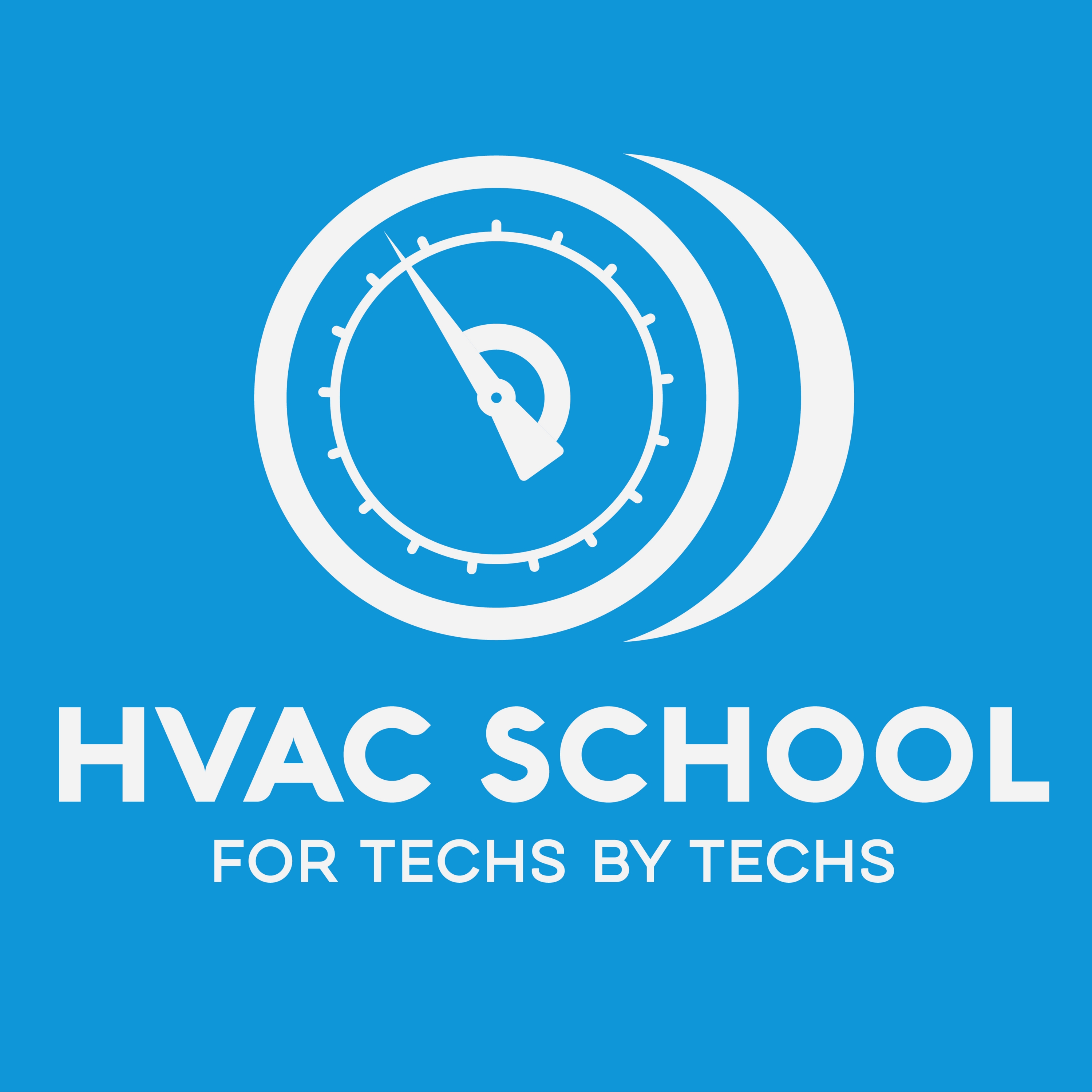
Education
Business
Bryan Orr
Real training for HVAC ( Heating, Ventilation, Air Conditioning and Refrigeration) Technicians. Including recorded tech training, interviews, diagnostics and general conversations about the trade.

3D Load & Energy Calcs w/ Duct Design
Russ King joins us for a short podcast episode about using 3D load and energy calculations with duct design. Russ has developed the Kwik Model 3D software program with the help of his son, Connor. Kwik Model 3D uses a video game platform to build a house out of boxes instead of a sketch. The software has evolved and been integrated into EnergyGauge to do load and energy calculations based on a house’s geometry. Kwik Model makes it easy and fun to create that geometry profile for a home, which makes building design and load calculation attractive to technicians. Software like Kwik Model may especially become popular as Generation Z steps into the workforce; we can expect the learning curve to be quite shallow for the digital generation. The Manual J calculation uses the home’s characteristics in Kwik Model and does all of the mathematical calculations in EnergyGauge for an advanced load calculation. KwikModel then receives those calculations for each room. Then, you can draw the ductwork and use an auto-size function to get the proper duct size based on the calculations. Energy simulations use several load calculations with advanced data to figure out what the energy usage will look like in a home with a certain set of load conditions. Russ and Bryan also discuss: Modeling quickly with Field Draw How building materials impact load calculations and energy simulations Energy simulations vs. load calculations Upcoming events with Russ King Kwik Model’s tech support Using the Unity platform to develop software for many different industries Learn more about the software and get your 30-day free trial at kwikmodel.com. If you have an iPhone, subscribe to the podcast HERE, and if you have an Android phone, subscribe HERE. Check out our handy calculators HERE. Check out information on the 2022 HVACR Training Symposium at https://hvacrschool.com/symposium/.
26:5915/02/2022
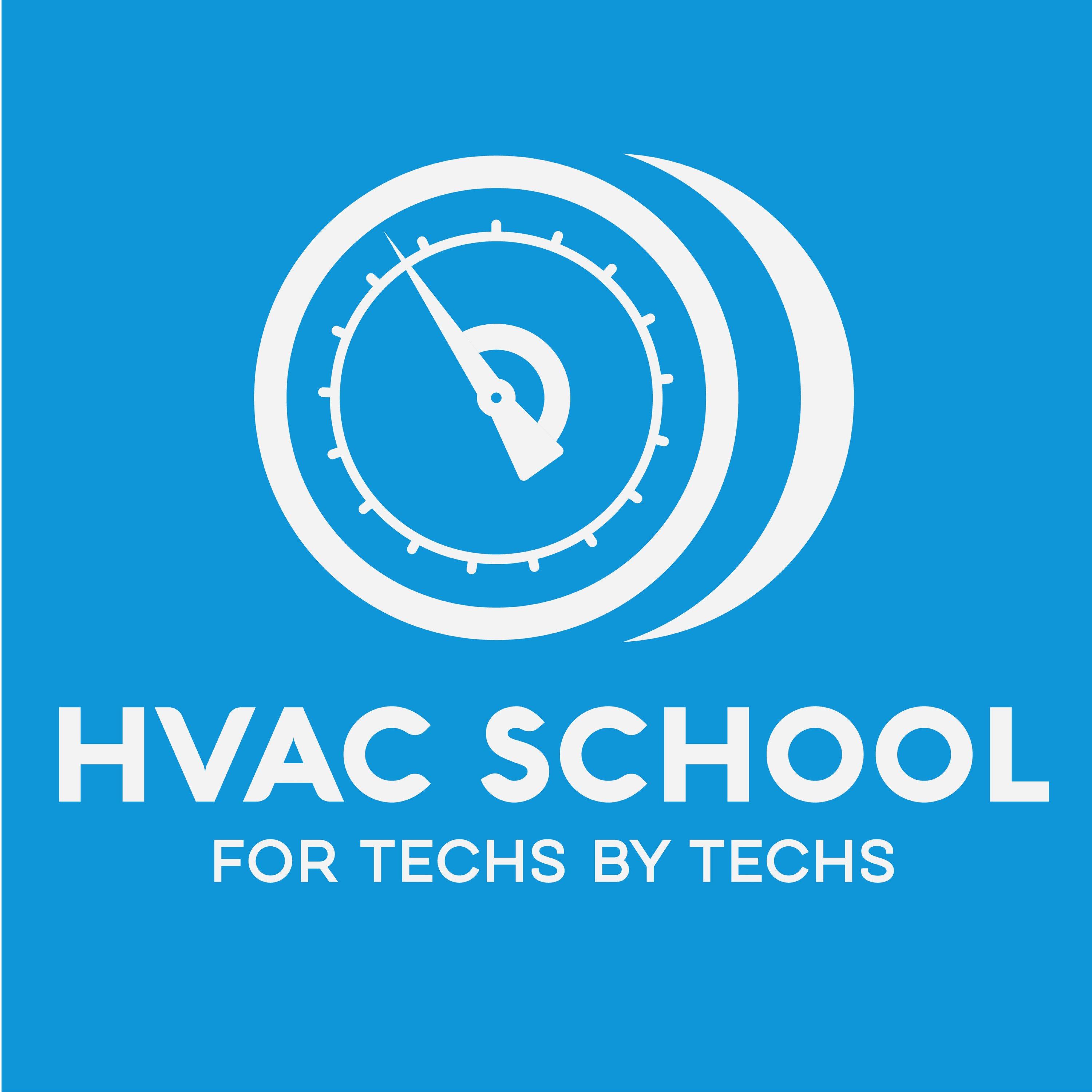
A History in HVAC Chemical Chemistry w/ John & Mike Pastorello
In this live podcast from AHR Expo 2022, John and Mike Pastorello of Refrigeration Technologies give us a history lesson in HVAC chemical chemistry. They also explain what it takes to make a truly beneficial product for the industry. From the beginning, Refrigeration Technologies has focused on solving problems instead of jumping on product trends. Before Big Blu was introduced, technicians had to rely on less-than-reliable electronic leak detectors and poor-quality soap bubbles. So, John Pastorello learned about the fundamentals of foaming and bubbles to create a leak reactant that works, even creating microbubbles for tiny leaks. Nylog has a similar origin story, and it has evolved to work for both mineral oil (red) and POE (blue) systems. As with Big Blu, John ran several tests to make sure the Nylog was compatible with HVAC equipment and did not cause contamination. The Viper Pan & Drain Treatment was developed to replace pan tabs, which failed to remove the dead biological material in drains. The spray coats the whole pan and dissolves sludge with enzymes. The Venom Packs are highly concentrated cleaners that arose from a move to consolidate the chemical line into something lighter, smaller, and faster. (Think about laundry detergent pods.) So, Venom Packs were inspired by laundry detergent and developed into a concentrated product line with recommended dilution ratios. Mike, John, Jessica, and Bryan also discuss: All the considerations that go into creating a leak reactant “Controversial” uses for Nylog Nylog white pipe dope for gas, water, air, and glycol Overcoming drain/pan odors Enzyme-based cleaning Safety considerations with HVAC chemicals Durability of Venom Pack packaging Family businesses Women in the business Learn more about Refrigeration Technologies at refrigtech.com. If you have an iPhone, subscribe to the podcast HERE, and if you have an Android phone, subscribe HERE. Check out our handy calculators HERE. Check out information on the 2022 HVACR Training Symposium at https://hvacrschool.com/symposium/.
39:4113/02/2022
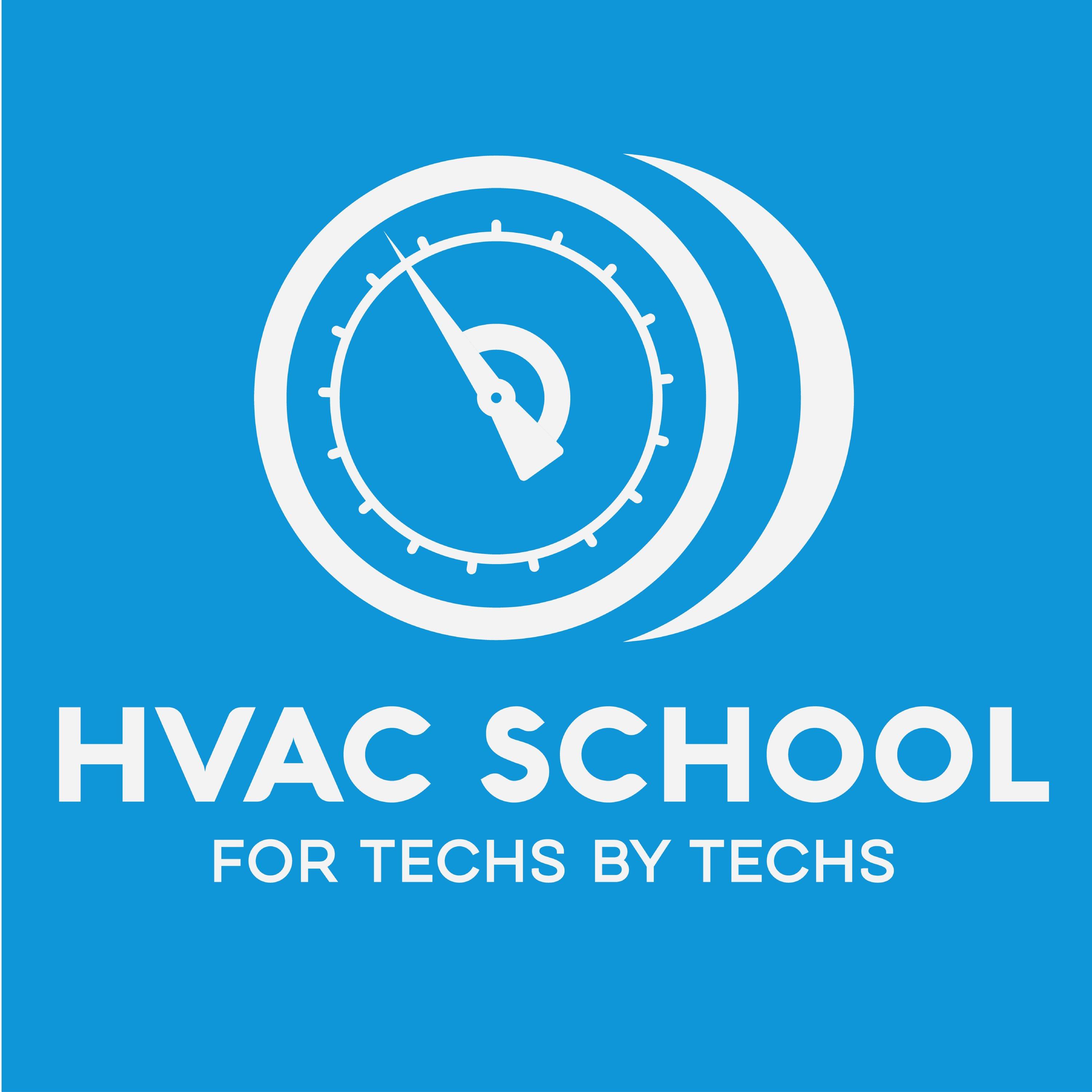
Upgrades and Proposals That Lead to Clarity & Profit w/ Michael Housh
Michael Housh returns to the podcast to discuss upgrades and proposals that are worth considering. These upgrades and proposals can actually benefit the customer AND lead to clarity and profit without turning you into a white-shirt tech. When assessing a system for replacement, it’s a good idea to look at the airflow side by measuring static pressure AND using a flow grid; these practices set you apart from others and supply you with good data about system sizing. Filtration is another area where you can consider upgrades and proposals; customers generally want to keep their air clean and may be happy to pay for better filtration, fresh air, and de/humidification. Surge protection is a high-value upgrade that many customers may benefit from, especially if the electrical company allows overvoltage or the customer has a voltage-sensitive ECM or inverter system. Some upgrades are useful and can be offered automatically (the customer can decline it); depending on the climate, a humidifier or dehumidifier may fit into that category. Proposals are a chance to put all of the offers on the table and allow the customer to select and decline whatever they want. When we adopt this business method, we would be wise to remove our egos from the process. Some processes that add clarity to proposals include creating checklists and taking lots of pictures for the customer. You’ll also create trust between you and the customer when you establish that clarity. Michael and Bryan also discuss: HVAC industry game-changers Profit margins Free quoting Fresh air considerations Consistent overvoltage Metal oxide varistors (MOVs) and the ICM493 IAQ monitors Attic infiltration and can lights Proposal verbiage and templates Callbacks and consultations If you have an iPhone, subscribe to the podcast HERE, and if you have an Android phone, subscribe HERE. Check out our handy calculators HERE. Check out information on the 2022 HVACR Training Symposium at https://hvacrschool.com/symposium/.
01:05:4110/02/2022

Free Tech Support w/ Clifton Beck
In this short podcast episode, Clifton Beck joins us to talk about Bluon’s free tech support and resources available to technicians and installers. Clifton has been very in touch with the HVAC technician community since he got his start in the trades, and he has taken that into tech support. He has noticed that the inefficiency in our industry tends to come from poorly learned practices, and working in tech support is a way for him to do his part to spread better practices while helping others. Lately, Bluon has become more of a tech support business. The new shift to focus on innovation has prompted Bluon to shift from making equipment more efficient to making technicians more efficient. The whole HVAC industry relies on that progression from developing on equipment to people. Tech support consists of answering calls but also creating training videos and creating layers of technician education and development. Manuals are just part of the picture; tech support helps with part identification AND the sequence of operations. Tech support reduces the amount of time it takes to learn about a part or locate components, which makes technicians more efficient and strengthens our industry. Overall, tech support calls are opportunities to train technicians to do better; they don’t just have to give away simple answers that don’t really help anyone. Clifton and Bryan also discuss: Bluon’s growth Trends in tech support calls Tech support and community involvement Feeling accomplished as a tech support representative Learn more about Bluon’s free tech support on the Bluon app, or you can check out bluon.com. If you have an iPhone, subscribe to the podcast HERE, and if you have an Android phone, subscribe HERE. Check out our handy calculators HERE. Check out information on the 2022 HVACR Training Symposium at https://hvacrschool.com/symposium/.
24:3608/02/2022

Blower Doors Don't Need to Be So Confusing w/ Genry Garcia
Genry Garcia returns to the podcast to talk about blower doors and why ACH50 may needlessly complicate efforts to tighten a building envelope. A large element of indoor comfort comes down to controlling the load, especially the latent load. Even though we can control indoor humidity sources, we may also deal with infiltration, which contributes to a high latent load and decreases comfort. The blower door test comes in when we can no longer control the load and need to determine how much infiltration is happening. When using blower doors, we would typically use an ACH50 test, which takes the CFM50 (cubic feet per minute that the blower door moves to get the house up or down to 50 Pascals) and translates it to air changes per hour at 50 Pa. To do that, you would need to find the volume of the space, which adds hurdles that the HVAC technician needs to deal with. However, Genry prefers using the CFM50 and factoring in the square footage and LAIR (leakage area infiltration ratio) to determine how tight a house is; he doesn’t focus on the building’s volume. To decrease the leakage, it’s best to stay focused on the CFM50 the entire time; worrying about the ACH50 just adds an extra step that we don’t necessarily use. Genry and Bryan also discuss: Connecting design and execution Attic encapsulation How to use LAIR Ceiling height and stack effect Blower door testing for code compliance vs. comfort consultation/diagnostics Common duct problems in new constructions Balancing supply ducts Automation of communicating controls IAQ products and dehumidification If you have an iPhone, subscribe to the podcast HERE, and if you have an Android phone, subscribe HERE. Check out our handy calculators HERE. Check out information on the 2022 HVACR Training Symposium at https://hvacrschool.com/symposium/.
44:2503/02/2022

Introduction to Psychrometrics w/ Eugene Silberstein
Eugene Silberstein, a co-author of Refrigeration and Air Conditioning Technology (RACT manual), joins the podcast to give us an introduction to psychrometrics. Psychrometrics focuses on the properties of air and its contents, especially as they relate to human comfort. To understand psychrometrics, we need to be able to quantify air: its weight, humidity, pressure, etc. We can do a better job as technicians if we figure out the air’s content and see how it relates to the CFM and overall unit performance. That way, we can have a more holistic view of HVAC performance instead of just focusing on adding or recovering refrigerant to improve performance. The psychrometrics chart helps us understand the conditions of the air based on quantities like water vapor, dew point, and more. The chart may intimidate techs, but it contains a wealth of information that can help technicians understand the air and the customer’s comfort better. Basic psychrometrics can also help us grasp why furnaces don’t actually dry out air; they pull the moisture out of the air and pull it back in, so the absolute humidity stays close to the same. However, we commonly add humidifiers because the relative humidity drops with the temperature rise. Eugene and Bryan also discuss: How air filters and blower motors interact with the air Things that affect the weight of air per cubic foot Humidifying air and its effect on the density of air High-pressure air moving to an area of lower pressure How latent heat works Pressure and the atmosphere Absolute vs. relative humidity Learn about ESCO’s e-learning network at hvacr.elearn.network/ and Psychrometrics Without Tears HERE. ESCO also holds the HVAC Excellence Conference; learn more about that HERE. If you have an iPhone, subscribe to the podcast HERE, and if you have an Android phone, subscribe HERE. Check out our handy calculators HERE. Check out information on the 2022 HVACR Training Symposium at https://hvacrschool.com/symposium/.
46:5101/02/2022
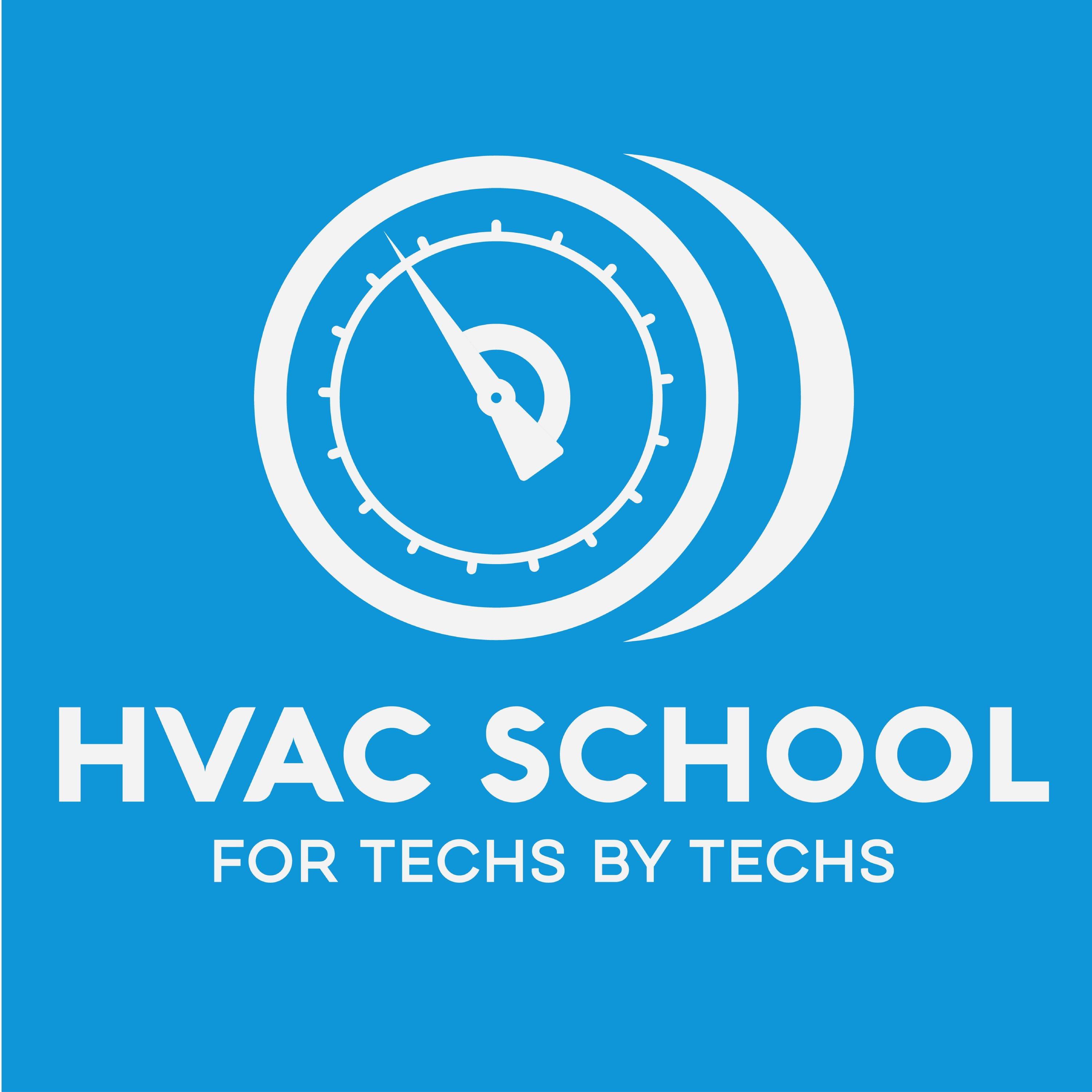
Prepare For Refrigerant Changes w/ Brandon Marshall
Brandon Marshall, Chemours’s North American marketing manager for thermal and specialized solutions, joins the podcast to discuss refrigerant changes that are coming and how we can prepare for those. Brandon started in the industry by going to a technical school when he was 14 and has been hard at work ever since, studying light commercial design and going to college in between. Local and global regulations have changed a lot over the years and continue to change as we continue maximizing our equipment’s efficiency. California will soon start switching to low-GWP refrigerant on new equipment in 2025; even R-410A can’t be used in new equipment. We will begin seeing the rise of A2L refrigerants and moving away from the A1 refrigerants that are more detrimental to the environment; we’ll have to focus on safety as we begin working with more flammable refrigerants. As new refrigerants get off the ground, we can expect increased communication between manufacturers and dealers to prepare for the sale of equipment built for the new refrigerants. Although we can’t confirm anything, Brandon has speculated that the EPA will soon follow in California’s regulatory footsteps when it comes to new equipment and R-410A. It’s a good idea to stay educated, subscribe to A2L newsletters, and follow HVAC trends in Europe to predict what might come next in North America. Brandon and Bryan also discuss: Educational resources about refrigerants What “mildly flammable” actually means European HVAC equipment Chemours at the AHR Expo Learn more about Chemours A2L training at opteon.com or Opteon’s YouTube channel. Check out what Chemours has in store at the AHR Expo at https://www.opteon.com/en/ahrexpo. If you have an iPhone, subscribe to the podcast HERE, and if you have an Android phone, subscribe HERE. Check out our handy calculators HERE. Check out information on the 2022 HVACR Training Symposium at https://hvacrschool.com/symposium/.
24:1827/01/2022

The History and Future of Refrigerants w/ Chuck Allgood
Chuck Allgood with Chemours joins the podcast to cover the history of refrigerants and discuss what the future might hold. In the late 1800s, before Freon, the only refrigerants that were used were industrial chemicals like ammonia, CO2, and sulfur dioxide. DuPont stepped in to provide a better refrigerant for industrial refrigeration (which then spurred the rise of domestic refrigeration), so they created a non-toxic, non-flammable chemical called Freon-12 (CFC R-12) in 1928. However, in the 1970s-1980s, it was discovered that R-12 and other CFCs depleted the ozone layer due to the chlorine content. R-12 production was banned in the 1990s per the Montreal Protocol. HCFCs like R-22 also have chlorine but in smaller concentrations; those phaseouts have been much more recent. Following news of the HCFC phaseout, HFCs and refrigerant blends became more popular because their ozone depletion potentials were 0. Although HFCs don’t deplete the ozone layer, some of them have high global warming potential (GWP). Regulations stemming from the Kigali Amendment, such as the American Innovation and Manufacturing (AIM) Act, have been introduced to phase down the production of HFCs to slow global warming due to refrigerants. HFOs have recently been developed to replace HFCs; these have olefins, which are double-carbon bonds with short atmospheric lifespans. So, they don’t contribute to global warming as significantly as HFCs and have GWPs of less than 1. Chuck and Bryan also discuss: What Willis Carrier really invented Chlorine and ozone depletion Development of refrigerant blends Freon vs. Opteon branding Refrigerants and the greenhouse effect Oil lubricants Best practices for mildly flammable refrigerants Timeline of Opteon line refrigerant releases Learn more about Chemours A2L training at opteon.com or Opteon’s YouTube channel. Check out what Chemours has in store at the AHR Expo at https://www.opteon.com/en/ahrexpo. If you have an iPhone, subscribe to the podcast HERE, and if you have an Android phone, subscribe HERE. Check out our handy calculators HERE. Check out information on the 2022 HVACR Training Symposium at https://hvacrschool.com/symposium/.
44:4825/01/2022
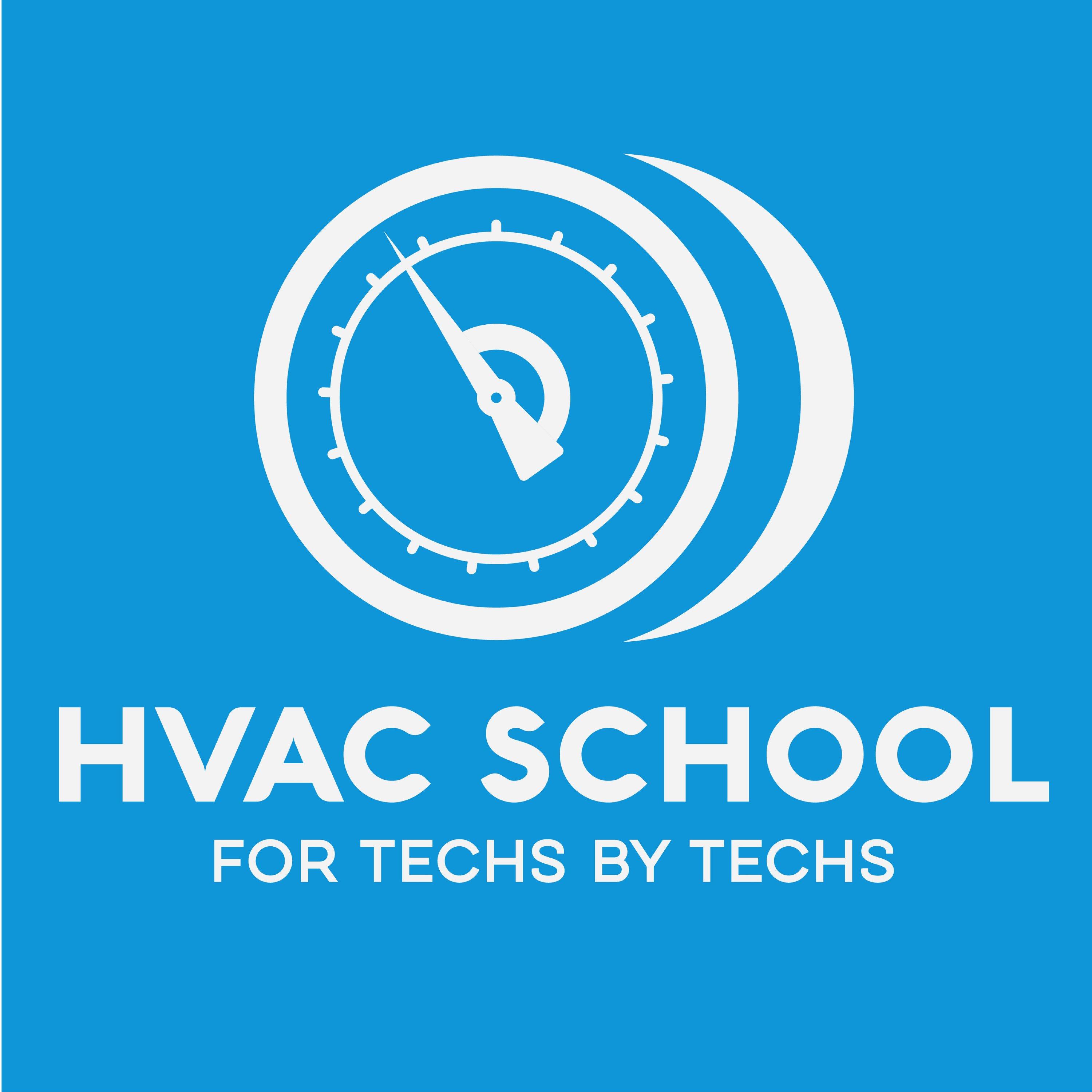
Overcoming Conflict at Work w/ Andy Holt
Andy Holt joins the podcast to discuss the ever-relevant topic of overcoming conflict at work. Some people end up in conflicts often, so Andy recommends paying attention to how others react to the conflict you have perceived; if you are much more stressed than everyone else, then you need to look internally, not externally. The first step to overcoming conflict is to slow down and think about your reactions to perceived conflicts. Partaking in bickering and gossip with coworkers creates a negative environment for the entire team; the best way to avoid or resolve conflicts is to handle them directly and sincerely ask the other party to start over. Overall, it’s best to take the high road and take initiative to make things right. When dealing with conflict with bosses, it’s best to separate emotion from the facts and keep discussions simply factual. It’s good to be open, honest, and understand that you can’t control your boss’s response. As a boss dealing with employee conflict, it’s a good idea to avoid firing on the spot and give employees a chance to think about the conflict at hand, such as by giving them a paid “cool-off period.” Customer conflicts may arise from pricing issues. The technician can ease tensions by quoting jobs up front and bundling services to show the customer where the value is. To resolve conflicts with customers, the best thing to do is be attentive to their concerns. Andy and Bryan also discuss: “Designing” a reaction Dealing with big egos Letting people go Working towards agreements vs. forcing bargains Dealing with hot tempers Taking ownership of comfort problems MeasureQuick and fact-based conversations If you have an iPhone, subscribe to the podcast HERE, and if you have an Android phone, subscribe HERE. Check out our handy calculators HERE. Check out information on the 2022 HVACR Training Symposium at https://hvacrschool.com/symposium/.
38:1920/01/2022

Commercial HVAC Estimating
Matthew and Nick Wavra join the podcast to discuss everything that goes into job estimation in commercial HVAC. Nick has a lot of fieldwork and project management experience, and Matthew has marketing, software, and sales experience, which helps bring in and retain clients. Commercial estimation begins when a mechanical contractor asks for a bid on a job. The estimators go through the spec books, bidding documents, and any addendums to come up with takeoffs and a price. The estimator seeks approval from manufacturers to build the materials, and they use software to come up with an estimate. The pricing updates weekly to stay current and accurate in an economy that’s currently facing inflation. Estimators develop takeoffs for materials and labor; each material has some sort of labor attached to it, though the labor estimates may need to be adjusted as conditions change. Commercial contractors may make mistakes when they miss equipment or elevation considerations (when estimating labor). On-screen takeoff options significantly reduce the risk of creating mistakes, so it may be unwise for contractors to do takeoffs by hand instead of using software to help. Matthew, Nick, and Bryan also discuss: Sheet metal price increases Software vs. man-made takeoffs DX piping vs. chilled water boilers Estimation in HVAC vs. refrigeration CRM (customer relationship management) Developing a commercial HVAC estimation training course Finding a niche in the HVAC estimation business Look for Nick and Matthew at the AHR Expo 2022 in Las Vegas! They will be at booth N9142 in North Hall. Learn more about Matthew and Nick’s business by visiting hvacestimation.com/ or by calling Nick directly at (238)-900-6330. If you have an iPhone, subscribe to the podcast HERE, and if you have an Android phone, subscribe HERE. Check out our handy calculators HERE. Check out information on the 2022 HVACR Training Symposium at https://hvacrschool.com/symposium/.
27:1730/12/2021
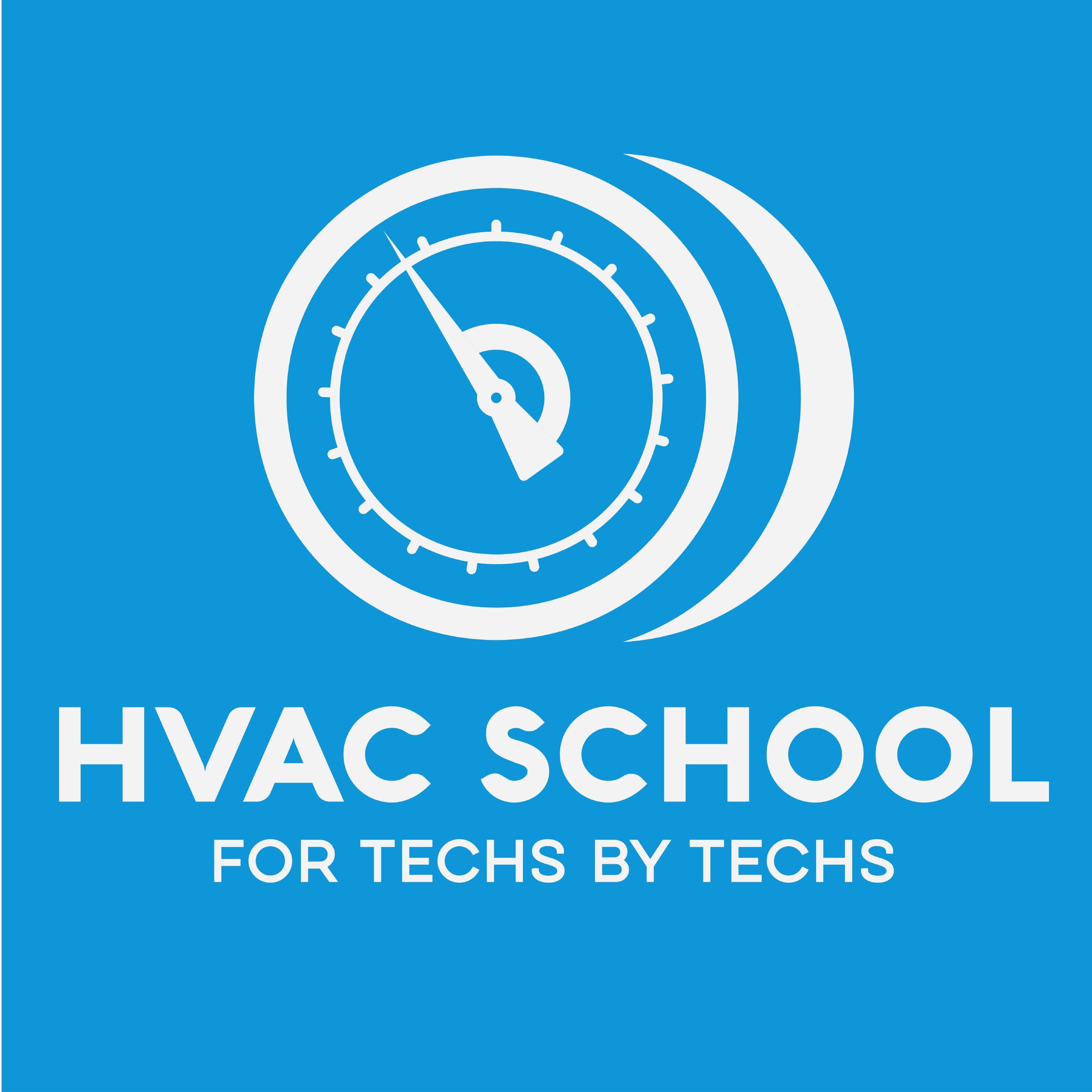
Furnace Sequence of Operation - Short 137
In this short podcast episode, Bryan goes over the basic gas furnace sequence of operations. There are a few variations, but the sequence of operations tends to stay consistent across most furnace types. First, a W call from the thermostat calls for heat. The circuit board will then assess the safeties to see if it can bring on the heat without causing flame rollout or other dangerous conditions. If the safety switches are all closed, then the furnace can bring on the heat. However, in some cases, the induced draft motor may come on first in some 80% furnaces. There needs to be a small negative pressure in the induced draft motor housing. To confirm that we have that pressure, a pressure switch will close under the right conditions. Then, ignition begins. In most cases, we use intermittent-spark ignition (ISI) or hot-surface ignition (HSI). It takes some time for these methods to light the pilot, which then lights the main burner. After that, the gas valve opens to fuel the burner. On an ISI system, that’s about it until the blower comes on. However, once the main burner opens on an HSI system, a flame sensing rod can verify if you have a flame on that burner. There is a blower delay that prevents the blower from coming on and blowing a bunch of air that hasn’t yet been heated. After that, the blower delay ends, and the blower comes on. Then, the furnace shuts off when the W call ends. Then the blower continues running for a little bit before turning off. If you have an iPhone, subscribe to the podcast HERE, and if you have an Android phone, subscribe HERE. Check out our handy calculators HERE. Check out information on the 2022 HVACR Training Symposium at https://hvacrschool.com/symposium/.
07:0128/12/2021

Starting an Internal Training Program w/ Trevor
Trevor Matthews, the founder of Refrigeration Mentor, returns to the podcast to talk about starting up an internal training program for an HVAC/R company. In some cases, the best lead technicians don’t want to be head trainers if the responsibility is forced upon them. However, when there is a solid training plan in place, those senior technicians might actually find the task enjoyable. The first step to starting a training program is to ask the apprentices and technicians where their skills are at and how they want to develop their skills. That way, you can map out a program that works for the technician and figure out how to make time for thorough training. When you grow people within your company, you’ll likely see more success than when you outsource training. It takes longer to develop the relevant skills in outsourced people; so, when you develop a solid internal training program, you can sustain it with the people who pioneered it. We also need to focus on evaluation in training. When we assess our techs’ skills, we add accountability to our training programs. However, it takes time for techs to grow from a training program, and we need to make sure we’re rewarding progress. Training also works best as a team approach. When we look at the techs’ strengths, we can diversify the training program and make sure that several skill bases are covered. Trevor and Bryan also discuss: Common excuses to avoid training Motivated trainers and technicians Labor shortage and skills gap Visual, auditory, and kinesthetic learning preferences Prevention-based training Managerial involvement in training Learn more about Refrigeration Mentor at https://refrigerationmentor.com/. If you have an iPhone, subscribe to the podcast HERE, and if you have an Android phone, subscribe HERE. Check out our handy calculators HERE. Check out information on the 2022 HVACR Training Symposium at https://hvacrschool.com/symposium/.
35:2623/12/2021
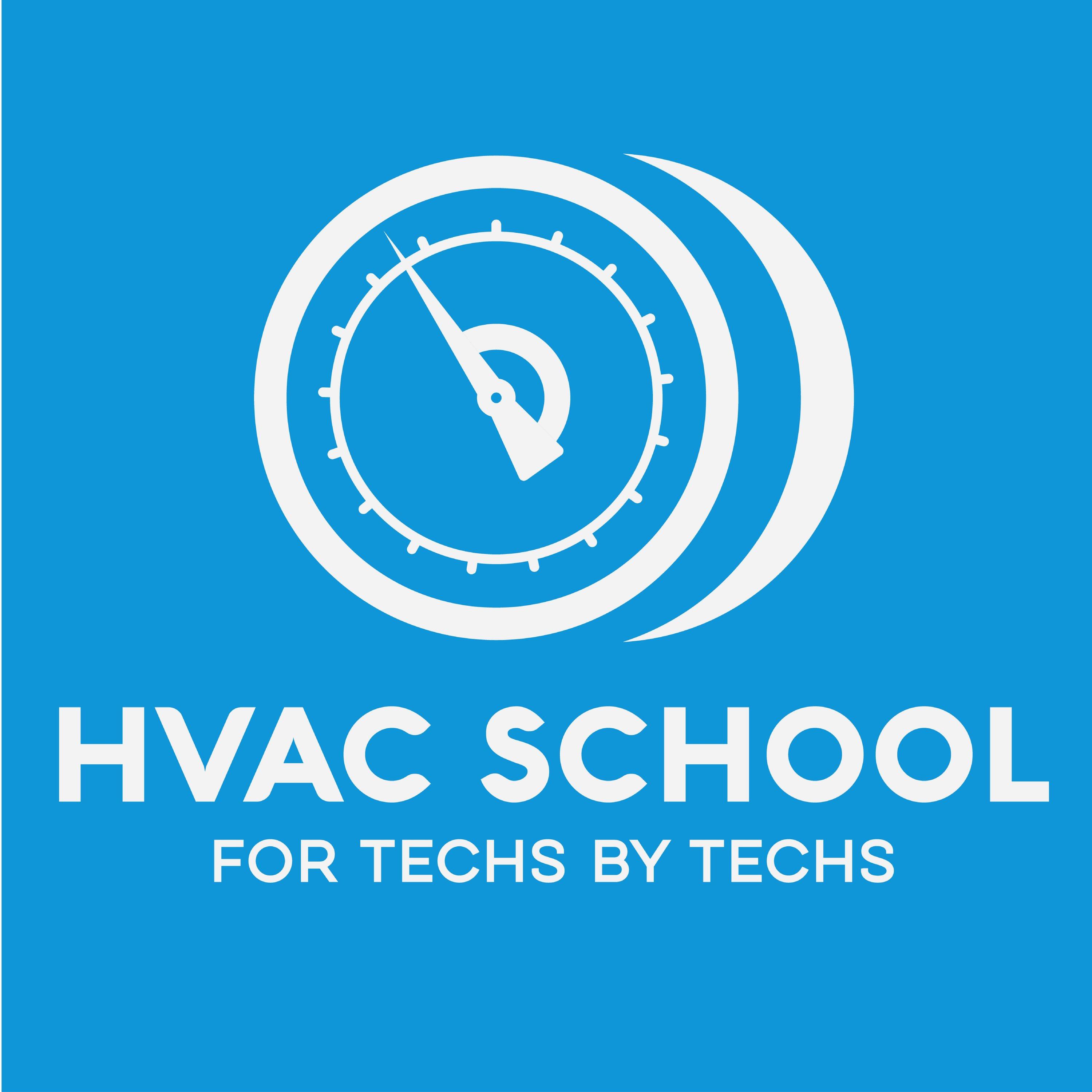
Flame "sensing" - Short 136
In this short podcast, Bryan explains the basics of flame sensing, also known as flame rectification. Flame sensing/rectification is a form of proving flame. When you can’t prove flame, your furnace might be dumping unspent gas into the heat exchanger, which can cause an explosion. Flame sensing rods are common in hot-surface (HSI) and intermittent-spark (ISI) ignition. These rods stick out into the flame and connect to the furnace board. The flame creates a path between the rod and ground, which allows a very small current to flow to the board. Without a flame, there is voltage but no path, so the board can’t sense a current and will shut the gas valve off to try again. Sensing rods can fail when they short out due to a cracked insulator, are physically broken, aren’t placed in the flame, or get covered in silica or carbon. If the furnace or burner assembly isn’t properly grounded, then the flame sensor also won’t work. Flame sensing rods are often confused with thermopiles or thermocouples; the latter devices generate voltage and have a coating that can rub off with improper cleaning. Flame sensing rods don’t have either of these features, so you can clean these by any means necessary (without breaking them or creating grooves or pits). To test a flame sensing rod, begin by making sure the furnace is properly grounded. Then, make sure the rod is in the right spot and that the burner assembly is in good order. Get a microamp meter (with a resolution that reads tenths of microamps). Then, connect your leads in series with the flame rod. If you have an iPhone, subscribe to the podcast HERE, and if you have an Android phone, subscribe HERE. Check out our handy calculators HERE. Check out information on the 2022 HVACR Training Symposium at https://hvacrschool.com/symposium/.
11:5521/12/2021

Grow a Business Through Customer Experience - Throwback Bonus
This podcast episode is a throwback to one of Bryan’s first small business podcasts. In this old episode, Australian electrician and businessman Joshua Nicholls explains how he built a business by focusing on customer experience and branding. Bryan grew Kalos similarly, so they talk about the journey of going from “man-in-a-van” businesses to larger businesses with several employees. Joshua wanted to bring old-school manners and integrity to the business world, and that’s how he branded his business. The focus on customer service over marketing earned the customers’ respect, and customers were happy to remain loyal to the business and recommend it to friends. The repeat business and referrals allow you to maintain a client base AND grow it without spending too much money on advertising. Eventually, the business grew big enough to require Joshua to change some of his internal processes. He needed to understand when to bring external help into the business, whether those helpers were financial advisors or mentors. Joshua reached a point where he got bored with his business, so he went to a conference in New Zealand and decided to start franchising the business. The business worked without him, and he decided to give a chance for young entrepreneurs to share in his business’s success and spread his business all over the country. Joshua and Bryan also discuss: Joshua’s origin story Authenticity in business What to do after the growth boom Profitability vs. work-life balance Turning customers into raving fans Scheduling appointments in a service business Knowing your numbers in business finance The “One Van, One Child” initiative If you have an iPhone, subscribe to the podcast HERE, and if you have an Android phone, subscribe HERE. Check out our handy calculators HERE. Check out information on the 2022 HVACR Training Symposium at https://hvacrschool.com/symposium/.
35:5616/12/2021
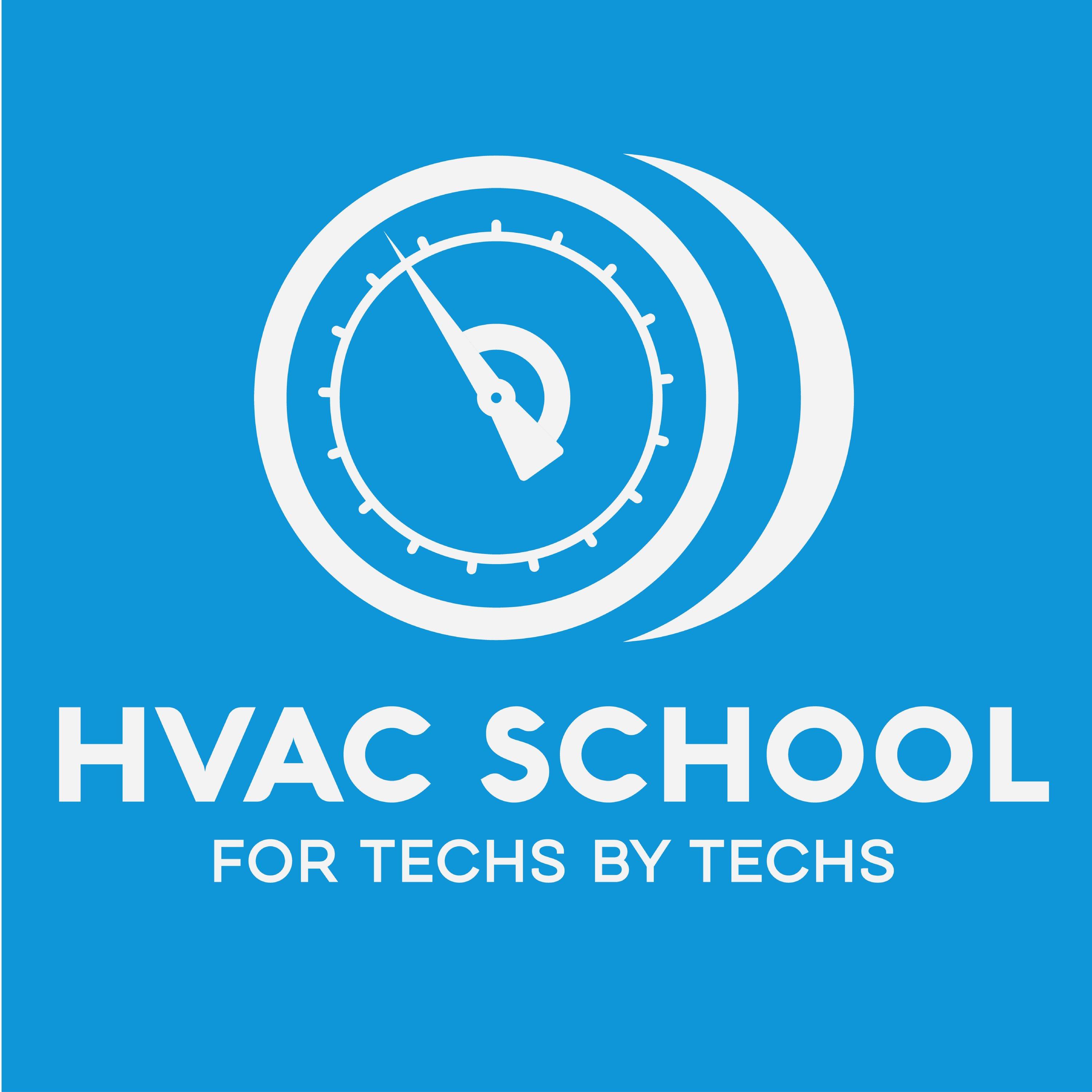
Refrigeration Defrost Termination & Fail Safe - Short 135
In this short podcast episode, Bryan covers the differences between defrost termination and failsafe. He also covers the basics of defrost in refrigeration applications. In medium-temp applications (also called coolers), the box stays above freezing temperatures, but the coil may drop below freezing. When the air is above freezing, we can use off-cycle defrost. The coil defrosts when the system naturally cycles off. We may also use timed defrost, which pumps down or cycles the compressor off at set times to force a defrost cycle. In low-temperature applications, the box will typically be below freezing. We may use electric heat to melt ice off the evaporator coil, and the fan stays off; this method is usually accompanied by a pump-down to remove refrigerant from the coil. We may also use hot gas defrost, which pumps discharge gas through the coil to melt the ice off it. (Kool gas may use a warm fluid instead of hot gas.) We want to stop the defrost as soon as the coil is ice-free; we don’t want to keep adding heat when we don’t need to melt anything. A defrost thermostat detects when the coil is free of ice and terminates the defrost when the temperature reaches around 55 degrees Fahrenheit; this is called defrost termination. We rely on a failsafe to terminate the defrost in case the defrost termination fails; the failsafe is the maximum amount of time a system is allowed to remain in defrost. Demand defrost uses time and temperature to tell the controls when to put the system into defrost; this method uses trend analysis and sensors to force the system into defrost at set times and intervals. If you have an iPhone, subscribe to the podcast HERE, and if you have an Android phone, subscribe HERE. Check out our handy calculators HERE. Check out information on the 2022 HVACR Training Symposium at https://hvacrschool.com/symposium/.
09:4614/12/2021

Intro to Project Management - Throwback Bonus
This podcast episode is a throwback to one of Bryan’s first podcasts about small businesses. Cesar Abeid, former VP of construction camera company Remontech, joined this podcast to discuss the basics of project management and a book that can help you step into that side of the business. Project management is a framework or set of tools to turn an idea into reality. Projects have a beginning and end to create something new, and project management is how we get from the beginning to the end while factoring in schedules and a budget. In essence, project management is a system. Effective project management requires a business to create processes and procedures for its services. For example, Remontech needs to plan the actual camera installation, but the company also has a bunch of internal processes to set up servers for recording. The key to project management is to remember what must be done and assign tasks to people as needed. One of the issues Cesar saw with project management books was the dryness and corporate nature of their language. As a project manager, Cesar used stories from his life to make his book more relatable and accessible to small business owners. Cesar and Bryan also discuss: Contractor-client communication External vs. internal processes Cesar’s book: Project Management for You Cesar’s preferred leisure activities Wasting time or learning? Purchase Cesar’s book or learn more at https://pmforthemasses.com/product/project-management-for-you-bundle-1/. If you have an iPhone, subscribe to the podcast HERE, and if you have an Android phone, subscribe HERE. Check out our handy calculators HERE. Check out information on the 2022 HVACR Training Symposium at https://hvacrschool.com/symposium/.
30:4509/12/2021

Dealing with Imposter Syndrome - Short 134
Bryan discusses impostor syndrome, what it is, and how it may actually be useful for us. When we feel that we’re frauds and that others wouldn’t like to be led by us if they knew how much we don’t know, we’re experiencing impostor syndrome. Contrary to what others might believe, impostor syndrome isn’t all that bad and may even be necessary for a healthy self-image. On the other side, we have the Dunning-Kruger effect, which is when people are confident in the things they have very little actual knowledge of. They think they’re experts and close themselves off to other sources of knowledge. On the other side of the Dunning-Kruger effect spectrum, true experts are acutely aware of what they still don’t know. We would be wise to know what the edges of our knowledge are and give others a chance to share their expertise when we reach those limits. When people learn more about a subject, they become much more aware of what they don’t know. Wisdom comes from knowing what you don’t know. However, if you feel that feeling of inferiority, you can still share the knowledge you have while seeking feedback and deferring to others who know more than you. (That’s especially true of Bryan, who has a summary knowledge of industrial refrigeration and defers to others who know more about it.) In the end, we’re seeking authenticity and self-awareness. Rather than avoiding impostor syndrome, we can embrace it and understand how it can lead to self-awareness, wisdom, and especially self-improvement. “Fake it till you make it” can only help you up to a certain point. If you have an iPhone, subscribe to the podcast HERE, and if you have an Android phone, subscribe HERE. Check out our handy calculators HERE. Check out information on the 2022 HVACR Training Symposium at https://hvacrschool.com/symposium/.
10:4507/12/2021

Transforming Grocery and Cold Storage with Data
Amrit Robbins of Axiom comes on the podcast to discuss how we can use data science to transform grocery and cold storage. Axiom Cloud uses cloud analytics and AI to map data and analyze trends on refrigeration racks. It can be particularly useful to keep track of readings all the time because it’s impractical to rely on a human to take and record readings 24/7. Grocery stores are unique because they have so much product at stake and are relatively inflexible in their usage of energy. If something goes wrong on a rack, thousands of dollars worth of products may be lost. If we could collect and review data at our fingertips, we could spot potential problems before the store loses money. These systems may also have alarms for case temperature problems, floodback conditions, and even some less immediate issues, such as a lack of floating suction. Axiom Cloud also monitors when systems go into defrost, so you can assess the cycles of case groups and figure out if they correspond to any issues. When you have data collection, you’re not relying on a “virtual technician” to automate HVAC work. Instead, data science can empower HVAC technicians and help them do their jobs more efficiently so that they can respond to issues before they become emergencies and serve customers better. After all, computer-based systems can’t repair or clean units! Amrit and Bryan also discuss: Generating value on behalf of the customer Compressor failures Technician labor shortage Creating sustainable working hours Developing more flexible energy usage Monitoring temperature rise across cases Thermal banking Preparing for data analytics to come to the industry Learn more at axiomcloud.ai. If you have an iPhone, subscribe to the podcast HERE, and if you have an Android phone, subscribe HERE. Check out our handy calculators HERE. Check out information on the 2022 HVACR Training Symposium at https://hvacrschool.com/symposium/.
43:1802/12/2021

Superheat Talk - Short 133
In this short podcast, Bryan goes over the basics of superheat and explains why it matters to us. Superheat is the temperature increase above a substance’s saturation temperature or boiling point. When a substance is superheated, that means it is 100% vapor; there is no liquid at all. We can look at our superheat to determine how much refrigerant is feeding our evaporator coil. A lower superheat indicates that our evaporator is more full of refrigerant than a high superheat, meaning that the refrigerant is feeding the evaporator coil well. Generally, a lower superheat value will be more efficient, but if the superheat gets too low, we can get liquid in the suction line and compressor. An evaporator can maintain roughly the same temperature throughout the bulk of the coil because the temperature stays the same during a phase change. As the refrigerant boils off from its liquid state, it remains at the boiling point. You generally want to see no less than 6 degrees of superheat, especially at the compressor. Zero superheat indicates that you have some liquid refrigerant (or that the system is off). Superheat can get tricky when we use refrigerant blends with glide. The different refrigerants in a blend have different boiling points, so the evaporator temperature can drift up. When determining the superheat of blends, we use the dew point to calculate the superheat (and bubble point for subcooling). We get superheat in the evaporator (suction line at the evaporator outlet) and the compressor (suction line at the compressor inlet). The latter will be higher because some sensible heat will be absorbed in the suction line. If you have an iPhone, subscribe to the podcast HERE, and if you have an Android phone, subscribe HERE. Check out our handy calculators HERE. Check out information on the 2022 HVACR Training Symposium at https://hvacrschool.com/symposium/.
14:3723/11/2021

Liquid Quality vs. Subcooling
In this podcast episode, Bryan and Eric Mele talk about sight glasses, the significance of subcooling in refrigeration, and liquid quality. While we measure subcooling quite often in HVAC work, we rely on sight glasses and liquid line receivers far more often in refrigeration. You need a sight glass to determine the liquid quality in a refrigeration system. Subcooling is one way to assure liquid quality without a sight glass or a receiver. Subcooling refers to the temperature drop below liquid saturation. Head pressure can dictate subcooling, and several other factors can dictate the condensing temperature, including stacking. We use sight glasses because a clear sight glass can tell us that we have a full column of liquid (therefore subcooling) without hooking up gauges. In HVAC, we care about having a certain level of subcooling because we want to make sure the refrigerant is fully liquid when it reaches the metering device; no bubbles should be present by the time it reaches the metering device. Like the suction line, the liquid line is a place where heat can be absorbed into the refrigerant. So, some manufacturers recommend insulating the liquid line to prevent heat from transferring to the refrigerant in the liquid line. Unit orientation also affects subcooling. For example, you can shorten the liquid line sizing if your liquid line goes downhill to the air handler. Conversely, longer lines and uphill liquid lines require special considerations when it comes to subcooling. Eric and Bryan also discuss: Liquid line receiver fill standards Subcooling and efficiency Sight glass placement Stacking liquid in the condenser Pump down strategies Mechanical subcooling Flash gas “Free” subcooling Ambient temperatures If you have an iPhone, subscribe to the podcast HERE, and if you have an Android phone, subscribe HERE. Check out our handy calculators HERE. Check out information on the 2022 HVACR Training Symposium at https://hvacrschool.com/symposium/.
30:1018/11/2021

Aluminum Repair Tips - Short 132
In this short podcast, Bryan explains the basics of repairing aluminum, such as on coils or tubing. Repairing aluminum can save lots of time on mission-critical calls and can help stop refrigerant leaks that lead to ozone layer depletion or global warming. Soldering makes almost all of the aluminum repair work we will do. (Brazing is possible, as aluminum has a melting point of 1200 degrees, but that’s still a bit too close to the brazing threshold.) When working with aluminum, we need to recognize that it melts at a lower temperature than brass, steel, and copper, and it doesn’t change color. Aluminum is also thinner and almost fades away under excess heat. First, you’ll want to figure out how to get the base temperature to the right temperature, usually with a flux. (Some fluxes require cleaning, some don’t; either way, we recommend cleaning.) The powder flux should go clear, and then you’ll be ready to apply the rod. In many cases, indirect heating can be difficult if not impossible. After you choose your alloy, you need to choose your torch. We recommend using a swirl-tip air-acetylene torch. (It’s good to use a 3 tip for microchannel.) When working with an air-acetylene torch, you will run lower temperatures than oxyacetylene torches, but you will experience more convective heat. (Heat control is the key!) When doing a repair, you want products that will make a solid bond to the outside of the joint. Make sure your products are for repairs, not for joining aluminum tubing. If you do aluminum repairs on an evaporator or condenser coil, cut the fins out of the way. Make sure your work area is exposed and clean. If you have an iPhone, subscribe to the podcast HERE, and if you have an Android phone, subscribe HERE. Check out our handy calculators HERE. Check out information on the 2022 HVACR Training Symposium at https://hvacrschool.com/symposium/.
12:5916/11/2021
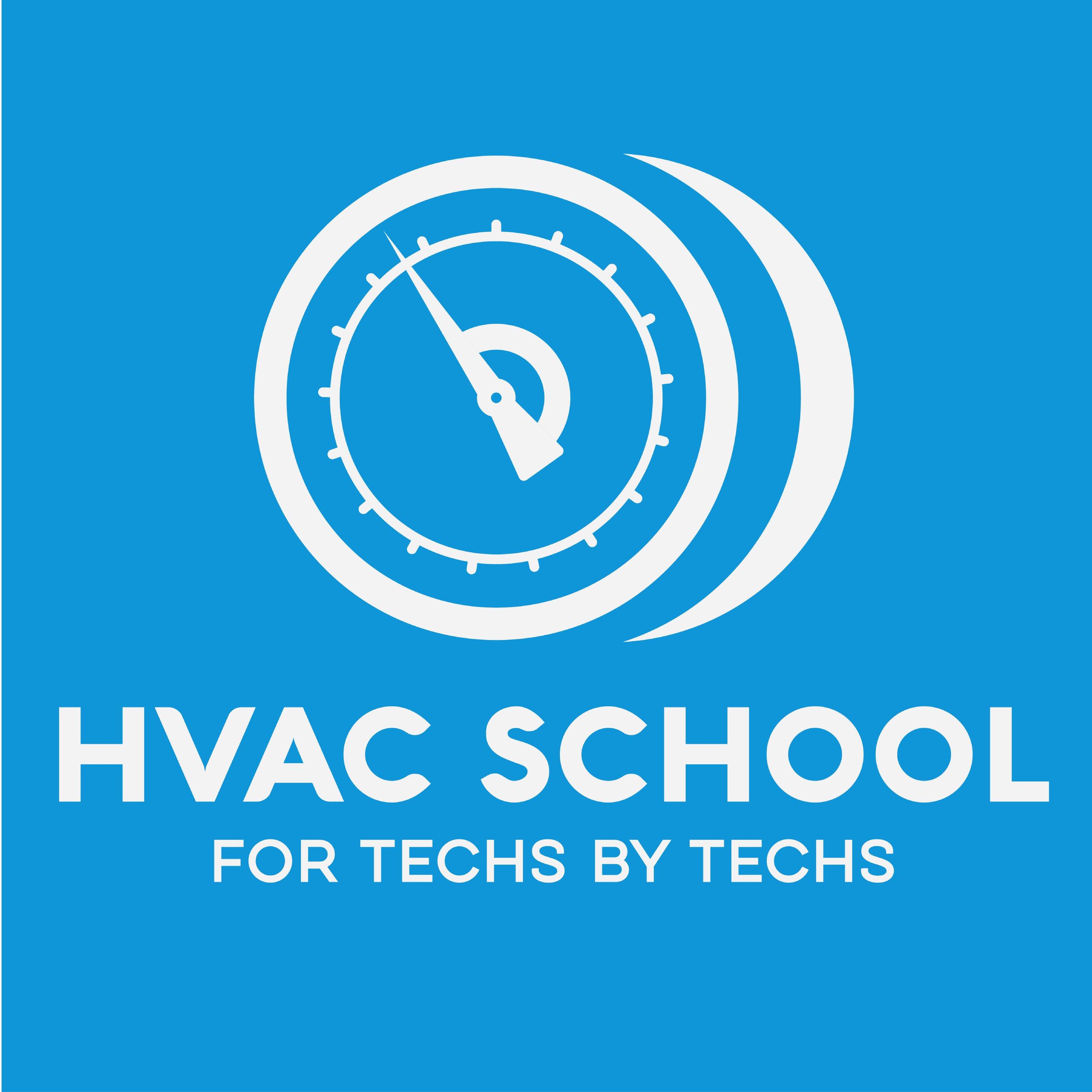
Specifically About Heat - Short 131
In this short podcast, Bryan goes over energy transfer and heat, specifically specific heat. BTUs per ton is a common measurement; a BTU (British thermal unit) is the amount of heat it takes to raise the temperature of one pound of water by one degree Fahrenheit. 12,000 BTUs per hour is equal to one ton in heating or cooling technology. It takes one “ton” of heat to melt a ton of ice, but we kept the measurement and terminology as we moved away from using ice in industrial refrigeration. When it comes to specific heat, we have to remember that one BTU has a different heating or cooling impact on different substances. Most fluids have a specific heat lower than water, meaning that one BTU of heat will result in more heat transfer in that substance than water. Air is one such fluid that has a lower specific heat than water (0.24 vs. 1); it’s easier to heat air than water. However, the specific heat of vapors can change with temperature and pressure. When we change a refrigerant from a liquid to a vapor in the evaporator coil, it will reach saturation before boiling. As the refrigerant boils, the temperature will stay the same because the absorbed heat will all contribute to the phase change as latent heat. Even though most refrigerants have low specific heat, direct expansion systems can still move a lot of heat because it takes a lot of latent heat to complete a phase change. In other systems that don’t use direct expansion (using glycol or water instead), specific heat is more integral to the effectiveness of heat transfer because latent heat isn’t a factor in heat capacity. If you have an iPhone, subscribe to the podcast HERE, and if you have an Android phone, subscribe HERE. Check out our handy calculators HERE. Check out information on the 2022 HVACR Training Symposium at https://hvacrschool.com/symposium/.
12:2009/11/2021

Pressure Measurement Pro Tips w/ Steve Rogers
In this podcast, Steve Rogers from The Energy Conservatory explains some pro tips for pressure measurement. There are three common types of pressure measurements: absolute, gauge, and differential. Absolute pressure is the pressure in a particular space in reference to a complete vacuum. (All absolute measurements use the zero point as a reference.) Gauge pressure uses atmospheric pressure as a reference point (which varies with altitude and location). Differential pressure relies on two connections (one of them is a reference point to the other). The Energy Conservatory recently designed a manometer (DG-8) that differs from the standard manometers. The purpose of that manometer is to make pressure measurements in a more cost-effective way. Most manometers have similar sensors (diaphragms move with pressure, and the measurement read is the resulting difference in resistance). However, the DG-8’s methodology can help it yield much more accurate measurements. When dealing with small pressure measurements (like Pascals), the DG-8 is one of the most accurate manometers you will find on the market. When you look at room pressure, keep in mind that pressurizing one room will depressurize another. Temperature differences also impact the pressure, and the HVAC unit can cause differences in pressure to arise as a result of temperature differences. When you run the kitchen or bathroom exhaust and expel a lot of air in your home, you can also bring the home under negative pressure; that can even cause your water heater to backdraft. Steve and Bryan also discuss: Blower door manometers vs. DG-8 manometers Pascal scale Room pressures and air paths Infiltration and its effect on load calculations Dominant duct leakage Combustion appliance zone (CAZ) testing Mechanical ventilation and pressure Orphaned water heaters DG-8 and the TrueFlow grid Learn more about the DG-8 HERE. If you have an iPhone, subscribe to the podcast HERE, and if you have an Android phone, subscribe HERE. Check out our handy calculators HERE. Check out information on the 2022 HVACR Training Symposium at https://hvacrschool.com/symposium/.
35:5904/11/2021
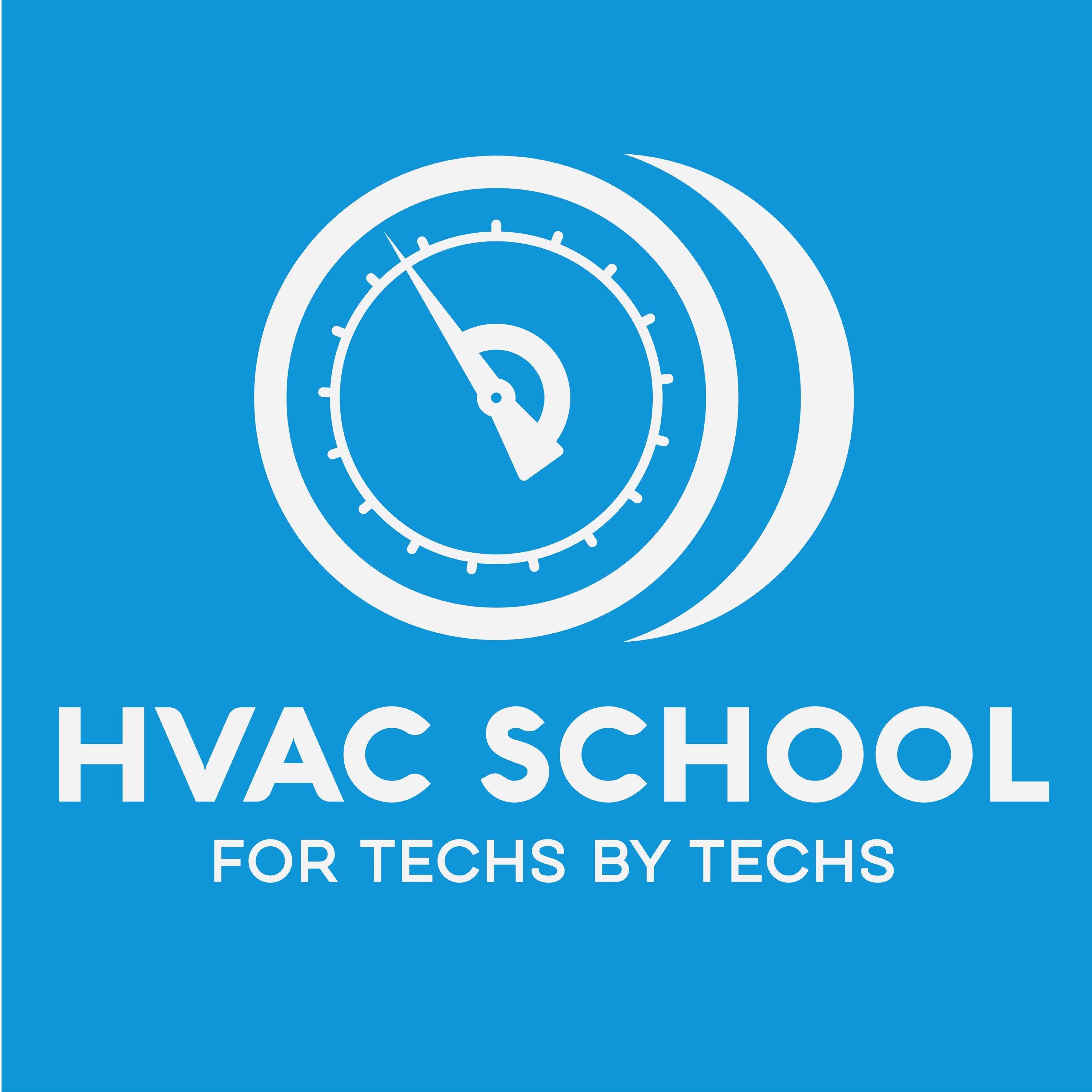
Copeland Reciprocating CS Compressors w/ Trevor
Trevor Matthews from Refrigeration Mentor comes on the podcast to talk about Copeland reciprocating CS compressors. He and Bryan cover Bulletin AE4-1433 (found HERE) as they look at the operating envelopes for the CS compressor. The CS compressors are hermetic reciprocating compressors that can work with some of the newer refrigerants. You will likely see these compressors in applications with smaller tonnages. You’ll usually want to charge these compressors with liquid refrigerant. If you have more than 6 pounds of charge in the system, using an accumulator is recommended. Under those charge conditions, the system also needs a check valve between the receiver and the condenser. Suction line pressure drop is one of the most important things to pay attention to in the system. Make sure the suction line is of an appropriate size, that filter-driers don’t have restrictions, and that accumulators aren’t clogged. Overall, many manufacturers recommend removing the duction driers to keep the pressure drop minimal. The recommended runtime for these compressors is also very short, only 5 minutes. CS compressors should cycle no more than 12 times per hour, and the off-time between cycles should be a minimum of 10 seconds. Before returning or replacing a compressor, make sure you check all of the electrical components, including the capacitor. If the compressor hums but has power, you could simply have a capacitor or potential relay issue. Trevor and Bryan also discuss: Return gas temperatures Discharge line temperature Compressor superheat and flooded conditions with refrigerant blends Crankcase heaters Pump-down recommendations to stop short cycling Initial charge vs. recharge Metering devices Line sizing Electrical shorts Sticking relays Single-phase vs. three-phase power Megohm testing Purging with and flowing nitrogen Burnout cleanup procedures Locking/tagging out equipment Hard start kits, potential relays, and start capacitors If you have an iPhone, subscribe to the podcast HERE, and if you have an Android phone, subscribe HERE. Check out our handy calculators HERE. Check out information on the 2022 HVACR Training Symposium at https://hvacrschool.com/symposium/.
56:5128/10/2021

Adiabatic Cooling - Short 130
In this short podcast episode, Bryan explains the science behind adiabatic cooling. Adiabatic cooling occurs in specific HVAC/R applications and in our environment as air temperatures and pressures change. When we think of cooling, we refer to the loss of heat; we are either referring to the change in the total BTU content of the air mass or the temperature change. Adiabatic cooling takes sensible heat and transforms it into latent heat. The most simple forms of adiabatic cooling can be seen in cooling towers and swamp coolers. In evaporative or swamp coolers, you have a pad saturated with water, and air moves over it. When air moves over the media, some of the energy helps evaporate the moisture on the pads, so the air loses sensible heat and becomes cooler. The thermal enthalpy (total heat content) stays the same, but some of the sensible heat has transferred to latent heat. Air that goes through a swamp cooler goes in with higher temperature and lower humidity, and it leaves with a lower temperature and higher humidity. The BTU content stays the same; the energy merely transforms. As a result, we usually only use swamp coolers in arid environments where higher humidity is desirable. You also can’t compare these to compression-refrigeration systems because compression refrigeration aims to change the BTU content and is NOT adiabatic. When we run air over an evaporator coil, some of the water vapor in the air condenses to liquid water in the drain pan. Some of the energy in the refrigerant changes the state of the water vapor to liquid water instead of changing the temperature. You’ll see a lower delta T when your return relative humidity (RH) is higher. If you have an iPhone, subscribe to the podcast HERE, and if you have an Android phone, subscribe HERE. Check out our handy calculators HERE. Check out information on the 2022 HVACR Training Symposium at https://hvacrschool.com/symposium/.
11:3126/10/2021

Fighting Boredom at Work - Short 129
In this short podcast episode, Bryan shares his top tips for fighting boredom at work. You can use these tips to help you get out of a rut if you don’t feel productive or get bored easily. The first tip for fighting boredom is to see the art or creativity in your work. Even in the HVAC industry, there are plenty of opportunities for artisan skills and craftsmanship. When you see your work as an art that you need to refine, it’s easier to get engaged in your work and feel proud of it. That's especially true of tasks like duct strapping and brazing. Another way to stop from getting bored is to do more things that challenge you. Being constantly challenged and being out of your comfort zone keeps you interested and can even spark a new passion. Pursuing mastery allows you to focus on one particular skill or subject to become an expert. When you master a skill, you also become a marketable job candidate and can carve out a niche within your organization. Mastery is about going deep rather than wide, and more people will feel enriched by working towards mastery than others. If you’re a social person, finding a community can keep you from getting bored. When you have a community, you will be around people who have the same interests and experience the same challenges as you. So, you won’t get bored from feeling alone. Mentorship is another way to rekindle your passion. When you choose to invest in and guide less experienced people in the trade, you can feel a renewed sense of purpose in your work. And if you’re REALLY bored, you can change everything up entirely and try something new. If you have an iPhone, subscribe to the podcast HERE, and if you have an Android phone, subscribe HERE. Check out our handy calculators HERE. Check out information on the 2022 HVACR Training Symposium at hvacrschool.com/symposium/.
14:0419/10/2021
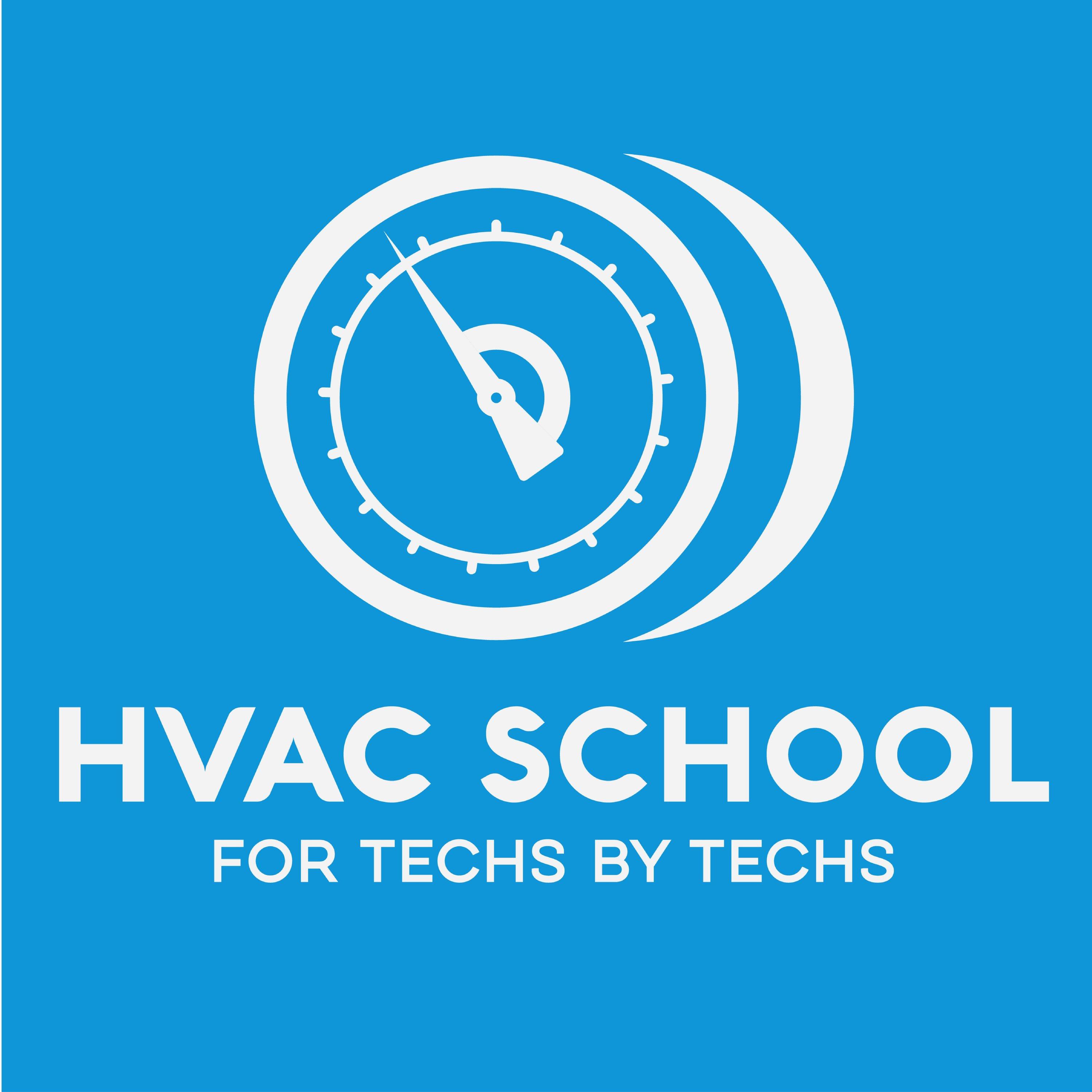
Review Of Vacuum For Service Revisted
In this podcast episode, Bryan goes through the addendum to the book Review of Vacuum for Service Engineers. He and Jim Bergmann had the honor of revising the latest edition in 2020. You can get the latest edition of Review of Vacuum for Service Engineers from TruTech Tools HERE. Pulling a Schrader core before evacuation makes a big difference in the speed of the evacuation. You can use a core remover tool to pull the cores when the system is NOT pressurized. There are three common types of ports to access the system: the Schrader core, high-flow core (CoreMax), and the multi-position service valve. You can mid-seat the multi-position service valve for high flow, but you need to remove or depress cores on the other two port types. (You must use a special CoreMax CRT to remove high-flow cores.) Three factors limit the speed of evacuation: the conductance speed of the pump, of the connecting hoses, and of the system. The hoses and manifold can severely impact evacuation. TXV and piston metering devices have short orifices and have very little impact on the evacuation time; on TXVs and EXVs, the valve should be fully open. When pulling a vacuum, make sure the vacuum pump works properly and has clean oil. Once you know that the pump is working, only pull on a tight system (no leaks) and make sure the seals are in good shape. Bryan also discusses: Micron gauge and hose placement Core depressors and CRTs Refrigerant holding charge When core restrictions are helpful Single-hose vs. two-hose evacuation speed Moisture removal One-hose evacuation of a split air conditioner Decay testing Hard shut-off valves How to solve micron gauge issues Nitrogen sweeps for wet systems If you have an iPhone, subscribe to the podcast HERE, and if you have an Android phone, subscribe HERE. Check out our handy calculators HERE. Check out information on the 2022 HVACR Training Symposium at https://hvacrschool.com/symposium/.
25:1014/10/2021

Electric Heat - Short 128
In today’s short podcast, Bryan discusses electric heat, how we use it in our work, and what it does. Also called heat strips or heat elements, electric heat is a supplemental heat source that we usually see on heat pumps. We generally see them in fan coils within a cartridge or a kit at the top of an air handler. However, not all systems have backup heat. We want to avoid running electric heat as much as possible because it is inefficient. There is almost nothing we can do to make heat strips more efficient; they will usually yield around 3.41 BTUs per watt. We usually only run heat elements when a heating system can’t keep up with the heat loss. However, the electric heat often runs more often than it should, which can cause inefficient conditions. You can avoid inefficient conditions by programming the thermostat properly. If you reduce the voltage on the heat strips, the less heat they will produce. Current ratings also differ between 208v or 240v applications. When you have more voltage, you’ll have more current as well. In some municipalities, you may have to use a thermostat that keeps heat strips OFF unless the temperature is below a certain value, often 40 degrees. Your electric heat should also be the last resort for a system. Heat strips also help with heating when a heat pump is in defrost. The defrost board backfeeds the electric heat. These heat strips are also often designed with an interlock that forces the blower on whenever the electric heat is on (but not the other way around). Bryan also discusses: Kilowatts and electrical ratings Wiring and relays Wire sizing Furnace-to-heat-pump conversions Possible hazards If you have an iPhone, subscribe to the podcast HERE, and if you have an Android phone, subscribe HERE. Check out our handy calculators HERE.Check out information on the 2022 HVACR Training Symposium at https://hvacrschool.com/symposium/.
12:5612/10/2021

Introducing Refrigeration Mentor w/ Trevor
Trevor Matthews comes on the podcast to discuss his newest project, Refrigeration Mentor. Refrigeration Mentor uses Trevor’s experience as a trainer and field technician to guide others in their careers. Trevor’s goal is to help commercial refrigeration technicians grow and become more confident in their skills. He wants them to become the best technician they can be, and he believes that mentorship is one of the things that make our industry great. Mentorship can help people advance their careers, sharpen their skills, and ease their anxiety about work. When we share knowledge, we bring value to the technicians. That value extends to the customer when technicians are more confident in their work and do better jobs. A good mentor has a commitment to doing quality work within the trade but will make their mentees feel comfortable to admit what they don’t know. Mentors can also help their mentees develop a solid work-life balance that helps mentees be present to their jobs and their families. The mentor’s job is to help their mentees reach their goals, whether that’s learning a new skill, entering a leadership role, or even starting a business. Trevor also wants to help business owners or managers strengthen their teams. He believes that a dynamic culture and a strong emphasis on training will help a business (and the industry as a whole) grow. His mentorship approach comes from strengthening technicians, businesses, and the industry from the heart. Trevor and Bryan also discuss: Holistic training Hesitancy to admit what we don’t know Passionate teachers Mental health Starting and managing a business from the inside Investing in training and mentorship Check out Trevor’s website at https://refrigerationmentor.com/. If you have an iPhone, subscribe to the podcast HERE, and if you have an Android phone, subscribe HERE. Check out our handy calculators HERE. Check out information on the 2022 HVACR Training Symposium at https://hvacrschool.com/sympos
24:3807/10/2021

Effective IAQ Measurement & Control w/ Haven
In this podcast, Ben from HAVEN IAQ, Kaleb, and Bryan discuss how to control indoor air quality and take effective, meaningful, accurate measurements. HAVEN is a platform that offers hardware and software delivered to a homeowner through an HVAC professional. HAVEN’s goal is to give its customers a healthier, more comfortable home using IAQ solutions. The hardware (controls, etc.) works with the HAVEN software to give customers and contractors data about IAQ and the performance of the HVAC equipment. Right now, you may install up to two HAVEN controllers and one monitor per zone to help control equipment and monitor the air content. Air sampling occurs every hour, whether the HVAC system is running or not. Customers can learn to control their ventilation habits to address acute events (e.g., a spike in humidity from cooking), which only result in short-term IAQ problems. However, contractors can use the air sampling data to develop solutions for chronic events (e.g., constant high humidity). Solutions, even simple filtration ones, are best left to the contractors to figure out. The integration of most IAQ products requires some degree of design and planning. HAVEN products do NOT provide plug-and-play solutions. While “demand” solutions can introduce outdoor air to prevent a viral problem, you could introduce a moisture problem without proper planning. Ben, Kaleb, and Bryan also discuss: HAVEN central air controller Building relationships with customers Software integrations with other platforms Filtration caveats HAVEN Pro Portal and Personal Use Program Ease of connecting HAVEN controllers to equipment “Demand” ventilation, dehumidification, etc. Importance of airflow Making IAQ product sales and educating homeowners IAQ placebos In-duct monitoring Introducing HAVEN products to your market Please visit pro.haveniaq.com to access HAVEN’s Pro Portal. If you have an iPhone, subscribe to the podcast HERE, and if you have an Android phone, subscribe HERE. Check out our handy calculators HERE. Check out information on the 2022 HVACR Training Symposium at https://hvacrschool.com/symposium/.
48:1505/10/2021
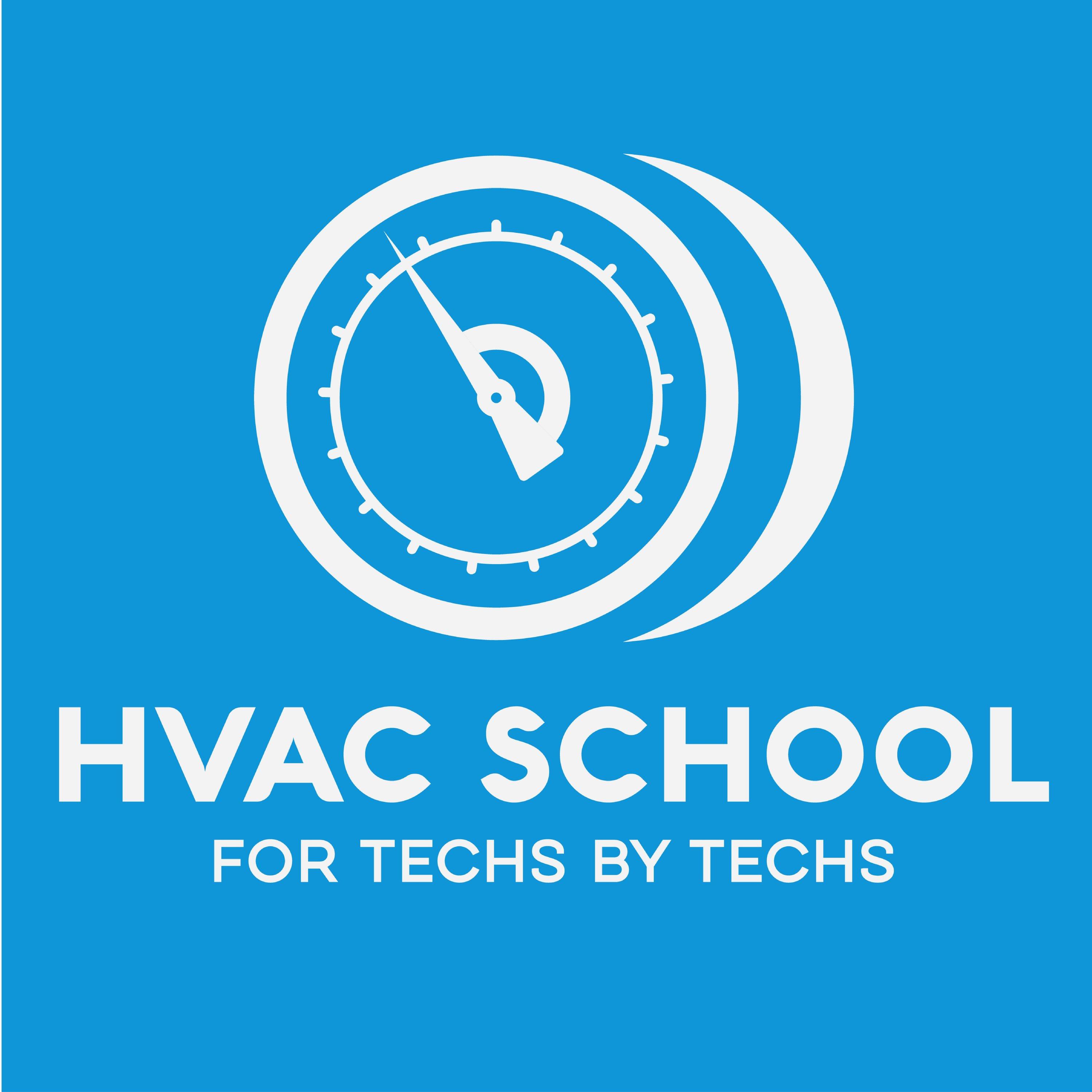
College vs. Skilled Trades w/ Ryan Gorman
Ryan Gorman comes on the podcast to discuss the differences between a college education and early career opportunities in the skilled trades. Many parents feel pressured to send their children to college and encourage them to get a four-year degree. Despite what society may lead us to believe, there is no shame in thinking that college may not be suitable for you or your child; the skilled trades have many opportunities for people to learn throughout their lives and make a good living. In many cases, parents may see college as a ticket to the starting line. Unfortunately, college tuition has skyrocketed over the years, and a good ROI is not guaranteed. Instead, a career in the skilled trades can allow a person to develop hard skills and land a well-paying job at a young age. As the skills gap widens, young people who learn skills make themselves attractive to employers and increase their earning potential. Children and teenagers who want to become engineers may actually prefer a trades career where they get to work with their hands. The path to the trades is less expensive than getting a four-year degree and may prove more fulfilling in the long run. Internships, small businesses, and trades careers are viable paths for young people; we don’t present these possibilities at a young age, but they are worth considering for people who may not benefit from college. Ryan and Bryan also discuss: The arbitrary structure of college programs Parents wanting better for their children Overvaluing the 4-year degree Networking The skills gap Craftsperson vs. technician Feeling "stuck" Attending college at an older age Lifelong learning Universal skills vs. specialization Suggested resources for people who feel "stuck" If you have an iPhone, subscribe to the podcast HERE, and if you have an Android phone, subscribe HERE. Check out our handy calculators HERE. Check out information on the 2022 HVACR Training Symposium at https://hvacrschool.com/symposium/.
39:0730/09/2021

A2L Refrigerant Facts w/ Jason Obrzut
Jason Obrzut comes on the podcast to discuss A2L refrigerant facts. Jason is a member of AHRI’s Safe Refrigerant Transition Task Force and author of the RACT manual. ASHRAE designates refrigerants into categories based on toxicity (A or B) and flammability (traditionally 1, 2, and 3). So, the new A2L designation indicates that a refrigerant is relatively non-toxic but has a flammability value between 1 (low) and 2 (moderate). While propane (R-290) is a good refrigerant because it is natural and has low toxicity, it is very flammable (A3). Future refrigerants will likely fall under the A2L designation; the mild flammability will probably be the tradeoff for efficient, low-toxicity refrigerant with a low environmental impact. However, A2L refrigerants cannot be vented, even despite their low GWP. We also cannot use these refrigerants in retrofits. A2L refrigerants will likely become much more prevalent around 2023 as HFC refrigerants phase down. The phase-down period will be specified shortly, and it will begin with a 10% reduction; the specific parameters of the phase-down have yet to be set. When working with A2L refrigerants like R-32, you can expect little to no change in how you work on equipment if you’re already employing the best practices. Sizing and capacity will hardly change in the residential market. In the commercial sphere, these systems still look and operate quite similarly to current units. Jason and Bryan also discuss: Refrigerant detection systems (RDS) Flowing nitrogen and other best practices Non-A2L HFC alternatives Left-handed threads Non-standard safety practices R-32 properties Refrigerant glide To learn more about A2L refrigerants, check out the AHRI Safe Refrigerant Transition Task Force’s webinars, newsletters, and fact sheets CLICK HERE. Check out information on the 2022 HVACR Training Symposium HERE. If you have an iPhone, subscribe to the podcast HERE, and if you have an Android phone, subscribe HERE.
39:2523/09/2021

Dealing with Difficult People at Work
In today’s podcast, Bryan and some Kalos employees discuss how to deal with difficult bosses and coworkers in HVAC/R work. Whether your coworkers have anger issues, are careless, or are miserable people, you don’t want that negativity to affect your job satisfaction. Addressing the behavior may likely help, but you don’t want to attack the other person. The key to dealing with difficult coworkers is to communicate boundaries respectfully with the goal of improving the work environment. Boundaries are also important when dealing with sarcastic people or those who make inappropriate remarks. Any work environment with lots of people is bound to have cliques and tribes. You’re best off not getting involved in any of that drama; the best thing you can do is be kind whenever you have the opportunity. Nepotism may also fall under tribal behaviors, and it may cause you to rethink your future with a company. On the leadership side, micromanagers can be frustrating—doubly so if your boss also happens to be condescending. If you have micromanager tendencies, try setting clear objectives and give your technicians room to develop. (If you’re on the receiving end, talk to your boss about bigger-picture objectives to cut down on micromanagement.) Learning is all part of working in the HVAC/R field, but you may encounter friction with bosses who won’t invest in learning or coworkers who refuse to learn new things. Try to have productive conversations with these people. If you’re talking to a boss who doesn’t invest in training, try to communicate your professional and educational needs. If you have a stubborn coworker or helper who doesn’t want to learn, try to help them understand the new material by using similes and metaphors. We also discuss: Distractions Sarcasm and rudeness Egomaniacs Inappropriate exaggeration Dishonesty Overreaction Check out information on the 2022 HVACR Training Symposium HERE. If you have an iPhone, subscribe to the podcast HERE, and if you have an Android phone, subscribe HERE.
01:40:5616/09/2021

The ACCA Manuals w/ Ed Janowiak
In today’s podcast, Ed Janowiak comes onto the podcast to talk about the Air Conditioning Contractors of America manuals. Ed started off in the field and has recently become the new Manager of Design Education at ACCA. You can follow him on Snapchat (skinnyed). ACCA (Air Conditioning Contractors of America) is responsible for publishing and setting the standards in all of the books we use for residential and light commercial HVAC work. (Residential work typically encompasses Manuals J, S, D, and T). The manuals can be very math-heavy. Many software programs have come on the scene to help automate the math to some degree, but the manuals will still remain relevant for years to come. The ACCA manuals offer guidelines for predictable results, and much of a technician’s success will come down to how well they understand the order of operations. In our trade, we have developed rules of thumb that help us with sizing and load calculations. However, those won’t work all the time, and the predictability element is lost. The ACCA manuals exist so that you can complete your calculations, sizing, and equipment selections with some degree of rhyme and reason. ACCA updates the manuals on 5-year cycles; the manuals require periodic updates to keep up with new climate trends and new equipment as it hits the market. The information in the manuals is not 100% accurate and is variable, but that is just a product of our ever-evolving industry and world. Ed and Bryan also discuss: Leadership responsibilities in ACCA Why HVAC business owners should be aware of the ACCA manuals 400 CFM per ton Mediocre designs Moisture problems and design conditions Basements, elevation, and insulation Constructive criticism ACCA training Sign up for ACCA training classes. Check out information on the 2022 HVACR Training Symposium HERE. If you have an iPhone, subscribe to the podcast HERE, and if you have an Android phone, subscribe HERE.
53:5809/09/2021

Money Conversations for Techs
In today’s podcast, Bryan and Jesse talk about how technicians can have conversations about finances and money in the HVAC business. The first step for any successful business is to provide customers/clients with a product or service of value. However, there must be a balance between providing something of value to customers and providing excellent customer service. When starting an HVAC business, one of the biggest mistakes is making money the top priority. Money can only become a factor after a business establishes the value of its services and communicates its value to its customers. There is no hard line for fair pricing, so the contractor and customer must have productive conversations to establish a price tag and the expectations for the work performed. That same mistake applies to employees who want raises or promotions. Employees may feel as though they are owed more for their work, but they must establish their value before they get a raise. Again, the goal is to avoid unmet expectations. Profitability and value are not just important to the managers and bookkeepers of an HVAC business. Technicians are the ones who bring those things to their organization. Labor is expensive, but it must be valuable if you want to turn a profit (either for the business or in the form of increased wages). Technicians can increase their value and profitability by mastering skills and learning niche practices. When a business becomes more profitable, it can invest in better training for its techs. It can also have more control over the customers it chooses to serve. Jesse and Bryan also discuss: Maintenance agreements Service repairs Misunderstandings about tax write-offs Bundling and flat-rate pricing Establishing value with commercial customers Technician skillsets Warranty challenges How to communicate price ranges Treating difficult clients with respect Check out information on the 2022 HVACR Training Symposium HERE. If you have an iPhone, subscribe to the podcast HERE, and if you have an Android phone, subscribe HERE.
01:49:1902/09/2021
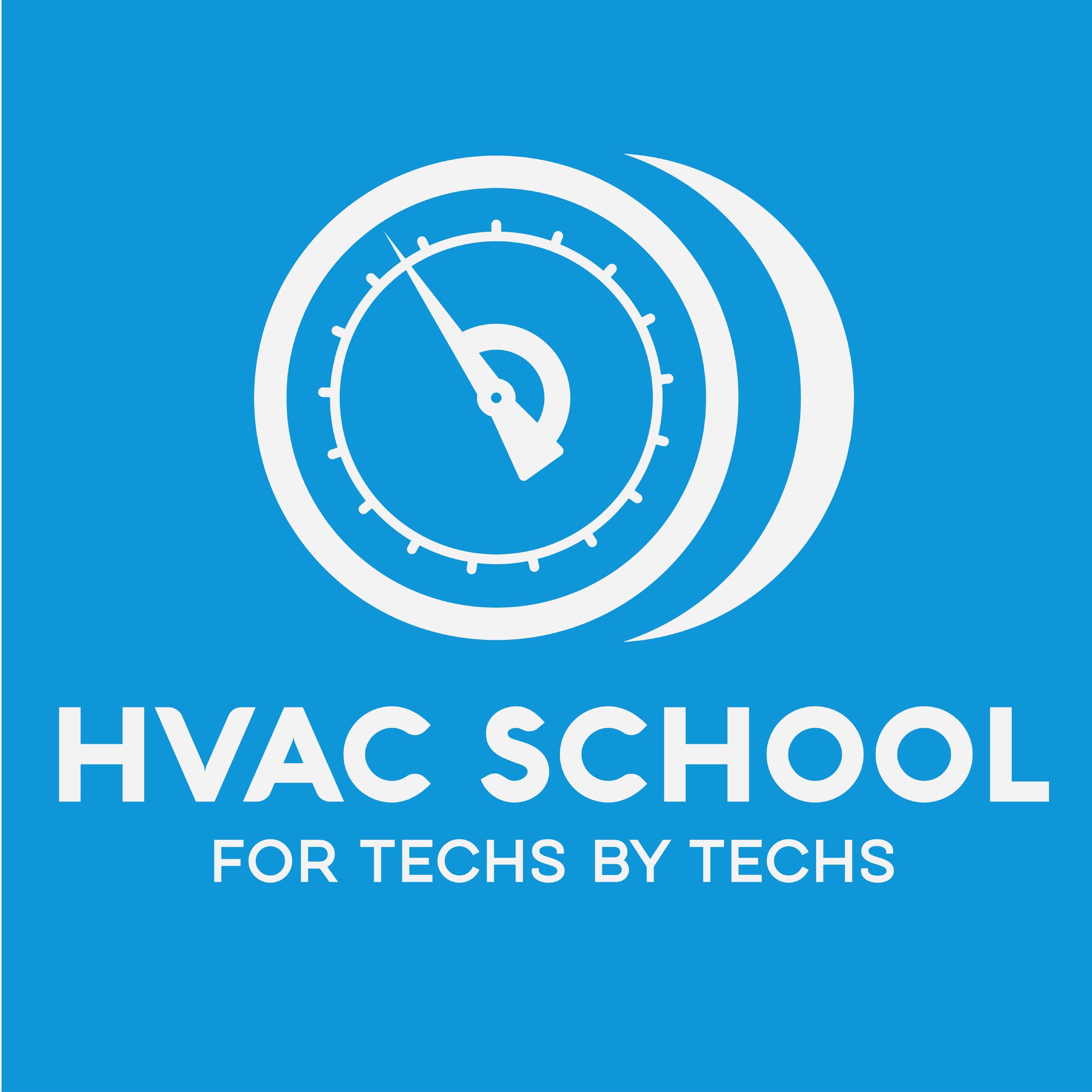
Sleeve vs. Ball Bearings - Short 127
In today’s short podcast, Bryan explains the differences between sleeve and ball bearings. Techs often make some avoidable mistakes because they either don’t know the difference between the two or don’t notice the bearing type on their equipment. On a basic sensory level, ball bearings tend to be louder than sleeve bearings. So, if you replace a sleeve bearing motor with a ball bearing motor, then excess noise may not indicate any problems after all. Lubrication is usually more consistent with ball bearings; those bearings have a far smaller contact area than sleeve bearings. Sleeve bearings don’t usually have the best longevity; they have a larger contact area and can burn out quickly, so they are more common on smaller equipment where they will experience less intense axial forces. Those sleeve bearings also aren’t as effective as ball bearings in variable-speed equipment. When techs put in a motor speed control and don’t pay attention to the bearing type, they may end up burning up the motor if it has sleeve bearings. To determine which type of bearings your equipment should use, you can take note of a few different things. Ask yourself if there are motor speed controls or any sort of motor speed variability. When the answer is yes, you’ll be better off using ball bearings. If longevity is a concern, then ball bearings are almost always the ideal choice. If nuisance noise and inexpensiveness are greater issues than longevity, then you’ll be better off replacing a sleeve bearing motor with another sleeve bearing motor than a ball bearing motor. Check out information on the 2022 HVACR Training Symposium HERE. If you have an iPhone, subscribe to the podcast HERE, and if you have an Android phone, subscribe HERE. You can also check out our handy calculators HERE.
05:5931/08/2021

Horizontal Scroll Compressors w/ Trevor
In today’s podcast, Trevor Matthews from Emerson talks about horizontal scroll compressors. Throughout the podcast, we refer to Bulletin AE4-1338 (R3). You can find that bulletin HERE. Horizontal scroll compressors are common in mobile applications, like buses and trains. They’re shorter in height than other compressors, so they fit into tighter spaces and are ideal for transport refrigeration. Scroll compressors are particularly susceptible to overheating, and you need some controls to protect your compressor from damage. To prevent overheating, scroll compressors require pressure relief controls. You can typically use an OEM high-pressure control to protect the system. A low-pressure cutout installed in the suction line can help prevent TXV failure and a wide range of restrictions. Accumulators are especially important for horizontal scrolls in heat-pump applications. However, accumulators have a fine mesh screen that can become clogged easily. So, we highly recommend replacing your accumulator in the case of burnout, not reusing it. Refrigerant migration prevention is a little more complicated than in refrigeration systems with other compressors. You can use a crankcase heater, but you may also need a check valve in the discharge line and a liquid line solenoid valve. We don’t use pump down cycles for refrigerant migration; we use them to prevent the gas from moving backward and reversing the scroll. When commissioning a three-phase compressor, you need to put your gauges on before starting the system up. You may also consider using a phase rotation monitor to make sure the scroll compressor is rotating in the correct direction (usually clockwise but not always). Trevor and Bryan also discuss: Variable-speed horizontal scrolls (ZRH vs. ZBH models) Superheat requirements Floodback and slugging Starting and running Extreme discharge line temperatures Arcing fusite under vacuum Functional checks Pressure drop in the suction line Operation envelopes Pressure control set points Check out Emerson for more information. If you have an iPhone, subscribe to the podcast HERE, and if you have an Android phone, subscribe HERE. Check out our handy calculators HERE.
41:5526/08/2021

Buck & Boost Autotransformers - Short 126
In today’s short podcast, Bryan discusses buck-boost (auto) transformers and what they do. Autotransformers are not automatic; the “auto” prefix comes from the fact that autotransformers only have one inductive winding. That winding is shared by the primary and the secondary, so it is not an isolation-type transformer. These transformers run current through the same winding used for induction. Buck-boost transformers rise or decrease voltage. When the transformer “bucks,” it decreases voltage from primary to secondary, and a “boost” increases the voltage from primary to secondary. In other words, a “boost” is a step up, and a “buck” is a step down on a small scale. You can only wire these transformers if you use the manufacturer literature. There are many types of autotransformers, and you need to know the exact setup for your transformer’s specific design. Generic diagrams will usually not suffice. When sizing a buck-boost transformer, you must keep your start load in mind as well. As technicians, we might not be able to handle the specifics of sizing based on the start load, but it’s still something to keep in mind. The “buck” configuration of the buck-boost transformer is especially helpful in markets where the utility company tends to produce overvoltage. Our specific setup uses the Micron J750A1EB1A02, which you can learn more about on YouTube HERE. The “boost” configuration helps when a motor doesn’t get enough voltage from the utility source. Before you buck or boost the voltage, remember to account for both sides of the equation; if the utility changes the voltage, you still want to be within range. Bryan also covers: Ratings Current and capacity changes based on voltage Inverter-driven technology Voltage monitors (ICM493) You can learn more about the 2022 HVACR Training Symposium HERE. If you have an iPhone, subscribe to our podcast HERE, and if you have an Android phone, subscribe HERE.
11:0624/08/2021

An Effective IAQ Process w/ John Ellis
In today’s podcast, John Ellis joins Bryan to talk about indoor air quality (IAQ). He also explains the ideal process for providing IAQ solutions. John has a lot of experience working as a consultant for people who have respiratory issues, so he has valuable perspectives. The HVAC and IAQ fields intersect in the areas of thermal comfort, humidity, building pressures, ventilation, filtration, and source control (which pollutants are present, where they come from, and how we can remove them). John does not believe in throwing IAQ products at a problem. He believes in a thorough analysis of the structure to present the customer with solutions tailored to their home and needs. Ideally, John would like to see technicians take a process-oriented approach to indoor air quality: investigate, analyze, and quote. He believes in the power of slow, complete diagnosis, including listening to customers’ complaints. Remember, they’ve been living in the structure and can tell you about the issues they’ve noticed in their home and their health concerns. When you analyze a system, you may have to do additional testing beyond a visual inspection. Sometimes, you can’t always find fungal growth or must call an expert to test for asbestos. The key to practicing IAQ is to be open-minded and seek help from experts beyond your field. While IAQ solutions can be expensive, they can be well worth it for many customers. Try not to pass your own judgment on the prices; after all, you are performing quality work and could save your customer money on medical bills. John also explains: How to start training for IAQ sales Customer questionnaires Maintenance agreements Becoming comfortable with IAQ diagnostics How to present high costs and financing options to customers Being a truly caring, attentive consultant IAQ marketing Making money as an IAQ consultant If you want to talk to John about IAQ, you can contact him at (505)-652-8119 or [email protected]. If you have an iPhone, subscribe to our podcast HERE, and if you have an Android phone, subscribe HERE. You can learn more about the 2022 HVACR Training Symposium HERE.
57:5419/08/2021

Caring for Technician Mental Health
In today’s podcast, Scott Krasman from TZOA, Andrew Greaves, and Kaleb Saleeby join Bryan for a conversation about mental health in the trades. We have a greater awareness of mental health than we ever did before, and although some of us may make fun of the topic, it is something we should focus on as HVAC technicians and business owners. “Toxic” is a common buzzword these days, but it’s relevant here. A work environment with toxic traits will wear you down over time as you are exposed to disillusioned or selfish journeymen or senior techs at work who disregard your wellbeing and development. Sadly, these behaviors often come from low morale and projection. HVAC industry leaders can take strides by promoting a culture of inclusiveness and encouraging conversations about mental health. There is also an element of personal responsibility within techs to acknowledge if something is wrong and to have honest conversations with their leaders. As techs, we need to know when to ask for help if we need it. Leaders must also look at themselves and address their own mental health issues so that they don’t project their issues onto others. As techs, we need self-awareness and intentionality to address our mental health. We need to understand what’s going on with ourselves (even if we need to talk to mental health professionals) so that we can take steps to get the support we need. We also cover: Helping younger techs grow Growth and discomfort vs. abuse and suffering Training, communication culture, and workload What it means to be in a dark place and how to get out of it Opening up to others about our struggles Active recovery Relationship issues and addiction Self-diagnosis and misdiagnosis Executive functioning Technology for mental health Caring for your body You can learn more about the 2022 HVACR Training Symposium HERE. If you have an iPhone, subscribe to our podcast HERE, and if you have an Android phone, subscribe HERE.
01:06:2218/08/2021
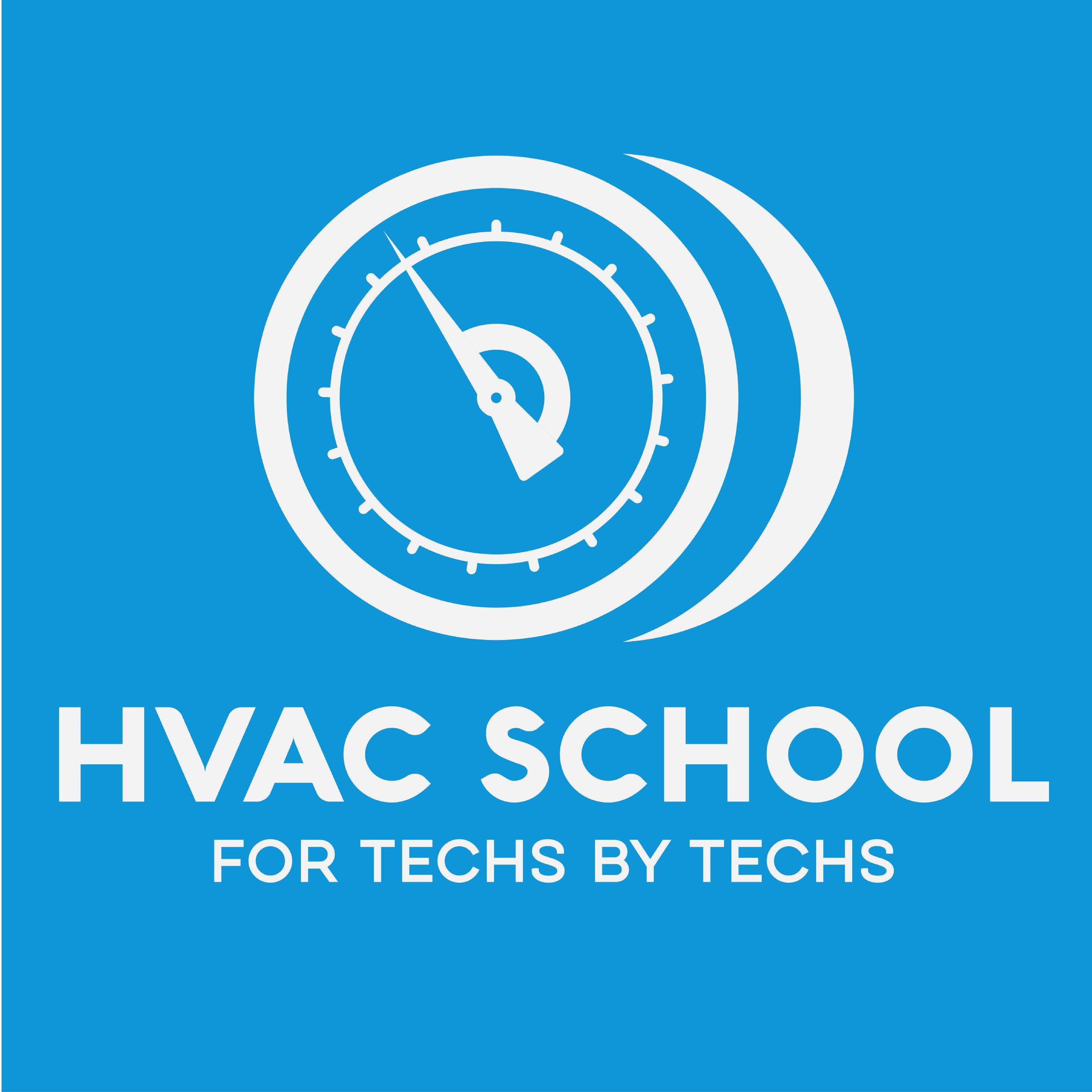
Troubleshoot the System! w/ Jim Bergmann
In today’s podcast, Jim Bergmann talks about troubleshooting the entire system. He takes a holistic approach to the art of troubleshooting, NOT just an equipment-centered one. According to NIST, the most common HVAC system problems are duct leakage, refrigerant undercharge, and oversized equipment (often for undersized ducts). Duct leakage heavily affects the envelope; the equipment only plays a part in conditioning a space. As such, you will want to seal up holes that lead to unconditioned spaces, such as behind the thermostat, to avoid creating negative pressure. When there is that negative pressure, especially close to the thermostat, the home could be at risk of over-cooling. We check that the filter is clean, but we rarely ever question if the filter is good enough for the home. If the filter does not do a good job of improving air quality, you may consider changing the filter type or reducing the air velocity. Even though we take temperature and pressure readings from the outdoor units, we sometimes fail to look for obvious non-equipment issues. Some yard cleanliness issues, such as vines or pet urine on the condenser, simply get overlooked. These issues may result in high head pressure and are usually more likely than refrigerant overcharge. Overall, many systems have issues that can be solved with solid visual inspections and corrective measures beyond the equipment, such as addressing duct leakiness. When you troubleshoot better, you bring in more revenue for the company and increase your likelihood of getting a raise while keeping your customers satisfied. Jim also covers: Energy penalties in most HVAC systems MeasureQuick and its limitations Impacts of duct leakage on a home What to check when cleaning condensate drains Cleaning evaporators and condensers Filter grilles HEPA filters and pressure drop Bad flex duct practices and sensible heat gain If you have an iPhone, subscribe to the podcast HERE, and if you have an Android phone, subscribe HERE. Check out our handy calculators HERE.
57:3812/08/2021

How to Measure Total System Airflow w/ Steven
In today’s podcast, Steven Rogers joins Bryan to talk about measuring total system airflow. Fluid measurement is NOT restricted to liquids; a fluid is anything that flows, including liquids and gases. In HVAC, we deal with both of them, but airflow is strictly limited to the flow of gas. The airflow we experience in HVAC is exclusively turbulent flow, NOT truly laminar flow. Total system airflow is difficult to measure directly; we can use flow hoods, but they have their limitations, especially on systems that have multiple returns. So, we measure pressures that give us clues about the airflow tendencies. One of the most recognizable measurements is static pressure. Many factors can contribute to poor static pressure, including dirty filters and poorly designed supply and return plenums. All measurements that you use to calculate static pressure will require an average. You take readings at multiple points of the duct, so you need to calculate an average value, whether you’re using static pressure tips, a hot wire anemometer, or a vane anemometer. Measurements are also particularly difficult to take in the supply registers, as there are almost no runs of straight duct. Recently, the TrueFlow grid has come on the scene to make airflow measurement easier. The grid relies on torque and RPM data to determine the total system airflow. The TrueFlow grid slides in where the filter goes and measures the total system airflow. The grid works with an app that considers the system tonnage to let you know how good or bad the airflow is. Bryan and Steven also discuss: Bernoulli’s principle “Moving” CFM targets Flow hood limitations Laminar vs. turbulent flow Static pressure probes vs. pitot tubes TESP and fan charts Precision vs. typical manometer TrueFlow grid vs. filter restriction Water heater backdraft Depressurization and combustion air zone Check out The Energy Conservatory’s Website HERE. You can also check out the TrueFlow grid on that site or at HERE. Check out our handy calculators HERE.
50:3605/08/2021

HVAC/R Career Advancement - Short 125
In today’s short podcast, Bryan explains how growth happens in an HVAC/R career. He also gives tips to get “unstuck” if you feel like you aren’t moving forward. You won’t move forward if you haven’t set a goal to move forward. Making a “vision board” helps you determine what matters in your life, and it helps you clarify what you’ll need to do in order to achieve your life goals. That way, you can use your career to help achieve those goals and see whose support you need. Having a growth mindset and a lifelong learning mindset is essential for success. The growth mindset will help you deal with the “growing pains” of advancement (such as occasional failures). People with positive attitudes also tend to see more possibilities for their future careers. On the other hand, negative people are likely to idle in their careers. You also want to surround yourself with people who will bring out your best. It’s great to be around people who challenge you, have positive outlooks, and are happy for you when you make progress. Moreover, you want to be the person who is authentically excited when other people succeed and do good work. Also, try not to burn bridges with others. To advance in your HVAC career specifically, develop your hands-on skills. Think about it this way: are you merely doing your job’s requirements, or are you working on yourself? Read through manuals and check out technical materials to become more literate with systems and do better work on them. Also, try to find a mentor who will help you grow. People skills are underrated in our industry but are critical for career advancement. If you have an iPhone, subscribe to the podcast HERE, and if you have an Android phone, subscribe HERE.
18:4403/08/2021
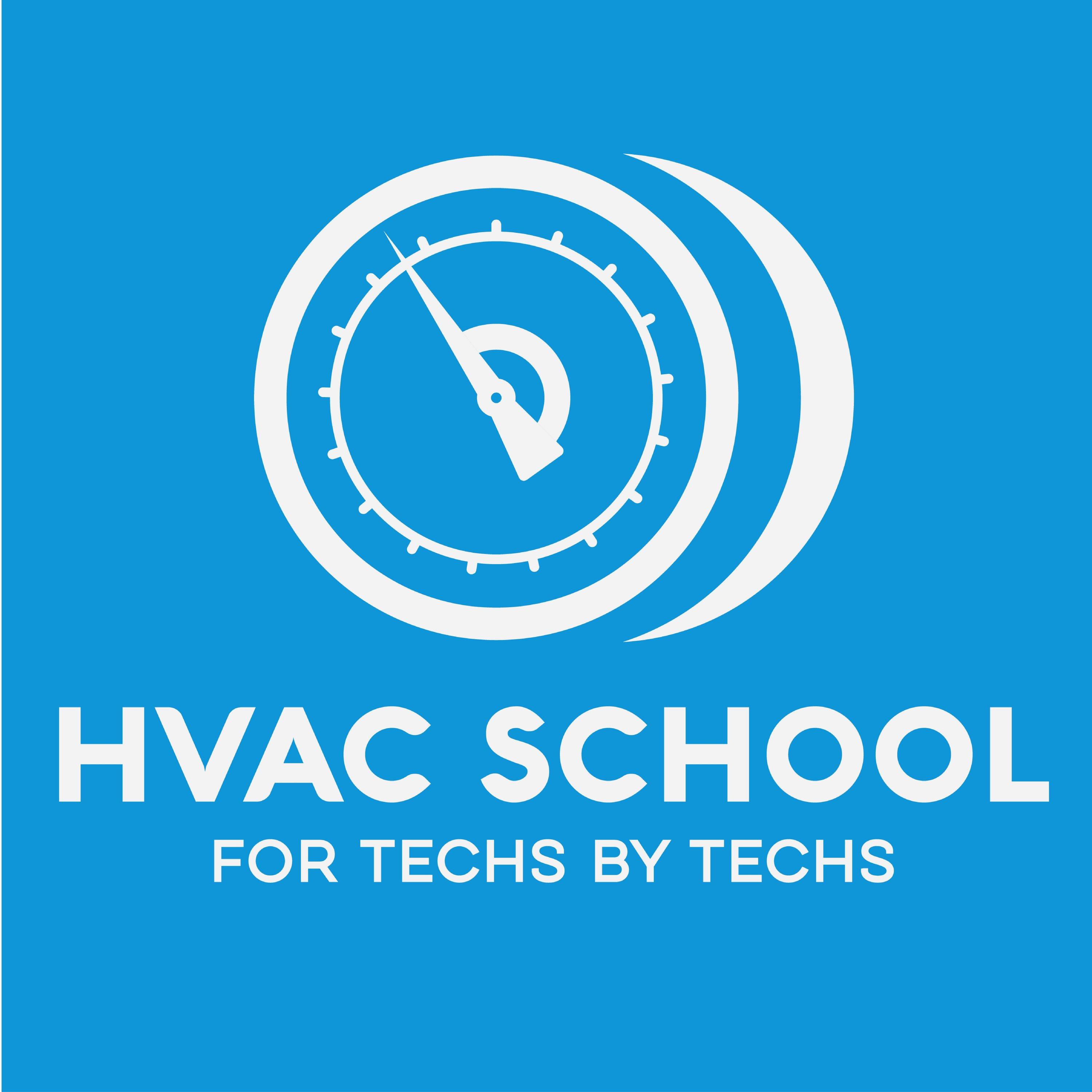
Mini-Split Controls Strategy w/ METUS
In today’s podcast, Bryan and a team of Mitsubishi Electric Trane HVAC US (METUS) managers (Mike Schaefer, Charles Miltiades, and Sly Grimm) discuss mini-split controls strategies. Some contractors misunderstand what mini-splits are. Mini-splits CAN be ductless, but not all of them are ductless. Mini-split systems also have handheld controls, but those are not the only control options for mini-splits. Mini-split controls also come in wi-fi, wall-mounted, and wired varieties. Another common misconception about mini-splits is that they do not work in the cold. While that used to be accurate, modern mini-splits can function well as heat pumps that integrate backup heat. That is especially when it is also tied into a ducted system. A lot of thought goes into sensor placement, and contractors have many options as to where they can be placed. You can put wireless sensors in discreet locations, such as under the air return in the basement. Lately, there has been a market shift towards a preference for multizone equipment, so the wireless controls help manage several units instead of just one; you can manage 30+ indoor units. In general, homeowners are becoming more tech-savvy and are beginning to prefer tying all of their HVAC systems together and managing them all via one platform. As such, Mitsubishi controls can connect to smart home assistants, such as Alexa or Google. Mitsubishi mini-split controls also work with a cloud service that remembers data. However, a strong wi-fi system is necessary for these controls. The Mitsubishi Electric team also covers: Third-party controls and backup heat Integrating with boilers for primary heat Control placement Multizone controls Smart devices and signal strength Innovative solutions Learn more at mylinkdrive.com and METUS’s YouTube channel. Check out our handy calculators HERE.
47:5629/07/2021
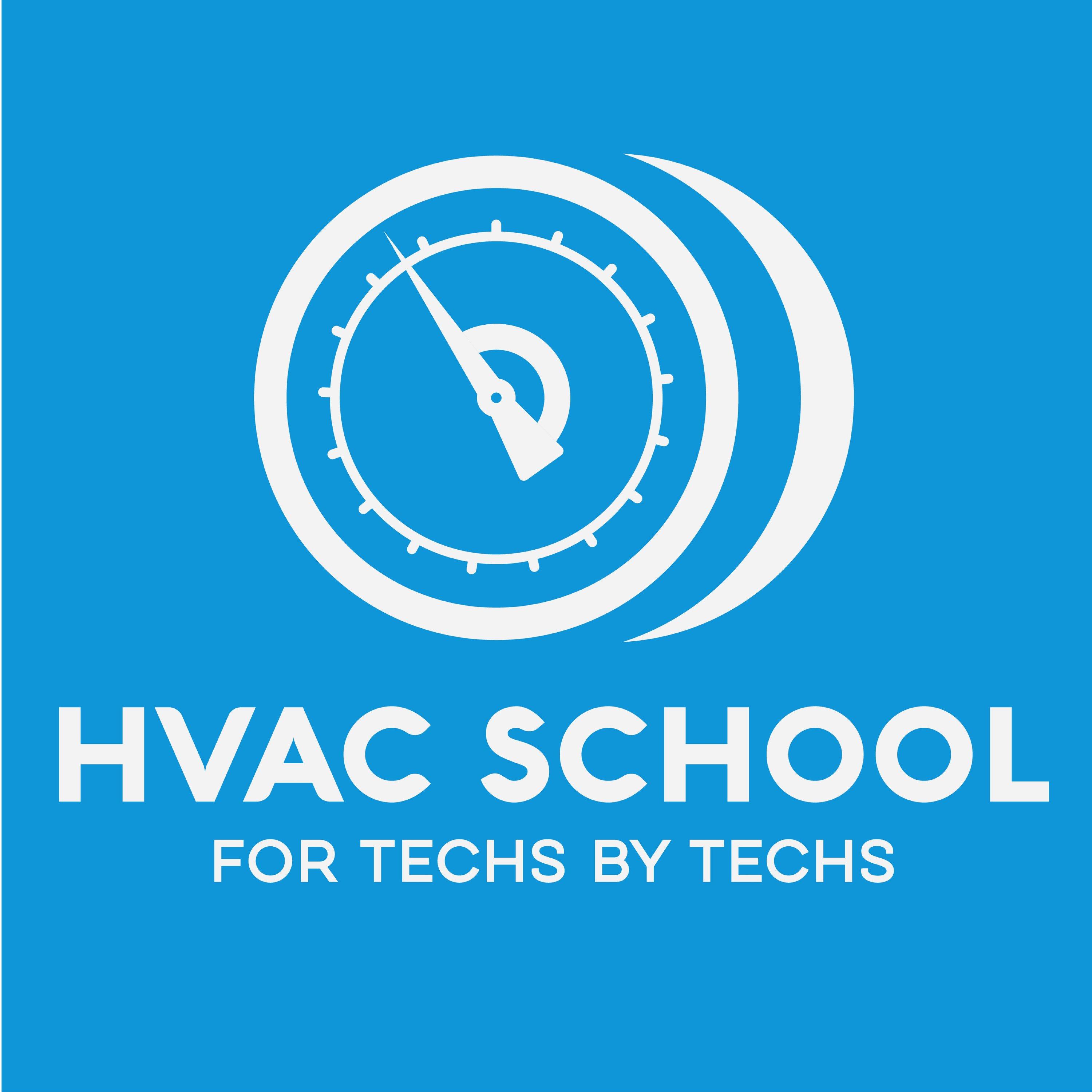
Key System Performance Factors - Short 124
In today’s short podcast, Bryan discusses the key factors for system performance WITHOUT doing a deep dive into system commissioning. “Performance” refers to system efficiency, capacity, air filtration/cleanliness, longevity, and the ability to match the latent and sensible loads of a space. System airflow is the main performance factor to consider. To determine proper airflow (CFM), consult Manuals S, J, and D to perform calculations. In general, the absolute lowest limit is around 275 CFM (in extreme dehumidification mode), and the highest limit should be around 525 CFM (in arid climates or at altitude). You can determine your CFM target after you set up your ECM motor in the design. Then, you can also check airflow indicators: total external static pressure and pressure drop across the filter. The best way to improve airflow is to reduce pressure drop across the filter and build a better return plenum. For improving overall system performance, make sure the ducts are appropriately sized. System charge is another important performance factor. There is a lot more to evaluating charge than checking the superheat and subcooling. If possible, it is a good idea to weigh the charge with a scale and see how it matches up with the line length. In terms of long-term performance, the condenser’s location and cleanliness are also vital. Overall, a condenser works best if you put it in a slightly shaded area or on the north/east side of a building. The outdoor unit should also have some clearance from bushes and walls. Make sure the condenser is positioned away from pool equipment, water softener discharge, and dryer vent discharge. The goal is to keep the outdoor unit corrosion-free and able to “breathe.” If you have an iPhone subscribe to the podcast HERE and if you have an Android phone subscribe HERE. Check out our handy calculators HERE.
13:4527/07/2021

Copeland Scroll Compressor Multiples for Air Conditioning w/ Trevor
In today’s podcast, Trevor and Bryan discuss Copeland Scroll Compressor Multiples for Air Conditioning. “Multiples” refer to equipment setups with multiple compressors that have connected suction and discharge lines, so they resemble parallel rack refrigeration setups. Multiples typically come in tandem (2) or trio (3) sets. Compared to having a single giant compressor, multiples are more efficient, more reliable, and have the ability to keep running in case if there’s a compressor failure. As a result, we often use multiples in rooftop units, makeup air units, and chillers. When you’re working on multiples or troubleshooting multiples, it’s okay to have sight glasses that indicate different oil levels. If you shut the compressors down and restart them, they should equalize. If you have a single compressor failure on a set of multiples, then you may have to replace both compressors in a tandem set; the manufacturer does not make single replacements for some tandem models. So, you can check the Application Engineering (AE) bulletin to determine your replacement needs. Multiples may contain compressors of different sizes. Compressors of different sizes have different mass flow rates. In these cases, you would use a flow restrictor to balance the mass flow across the compressors. On the refrigerant management end, the Copeland Scroll multiples will generally benefit from a crankcase heater. Correct location and installation of the crankcase heater are critical for proper functioning in multiples, and you can find that information in the manufacturer literature. Sometimes, you may also need an accumulator if there is a risk of refrigerant migration. Bryan and Trevor also discuss: Individual vs. multiple compressor manuals Oil equalization lines Compressor clamping Variable speed motors and compressor variability Sweating and flow restrictors Maximum tilt Adding oil Torque values Check out the AE-1430 bulletin HERE. Check out Emerson’s HVACR training HERE. Then, navigate to “Contractor Tool Box Talks with Emerson.” If you have an iPhone, subscribe to the podcast HERE, and if you have an Android phone, subscribe HERE. Check out our handy calculators HERE.
30:4122/07/2021
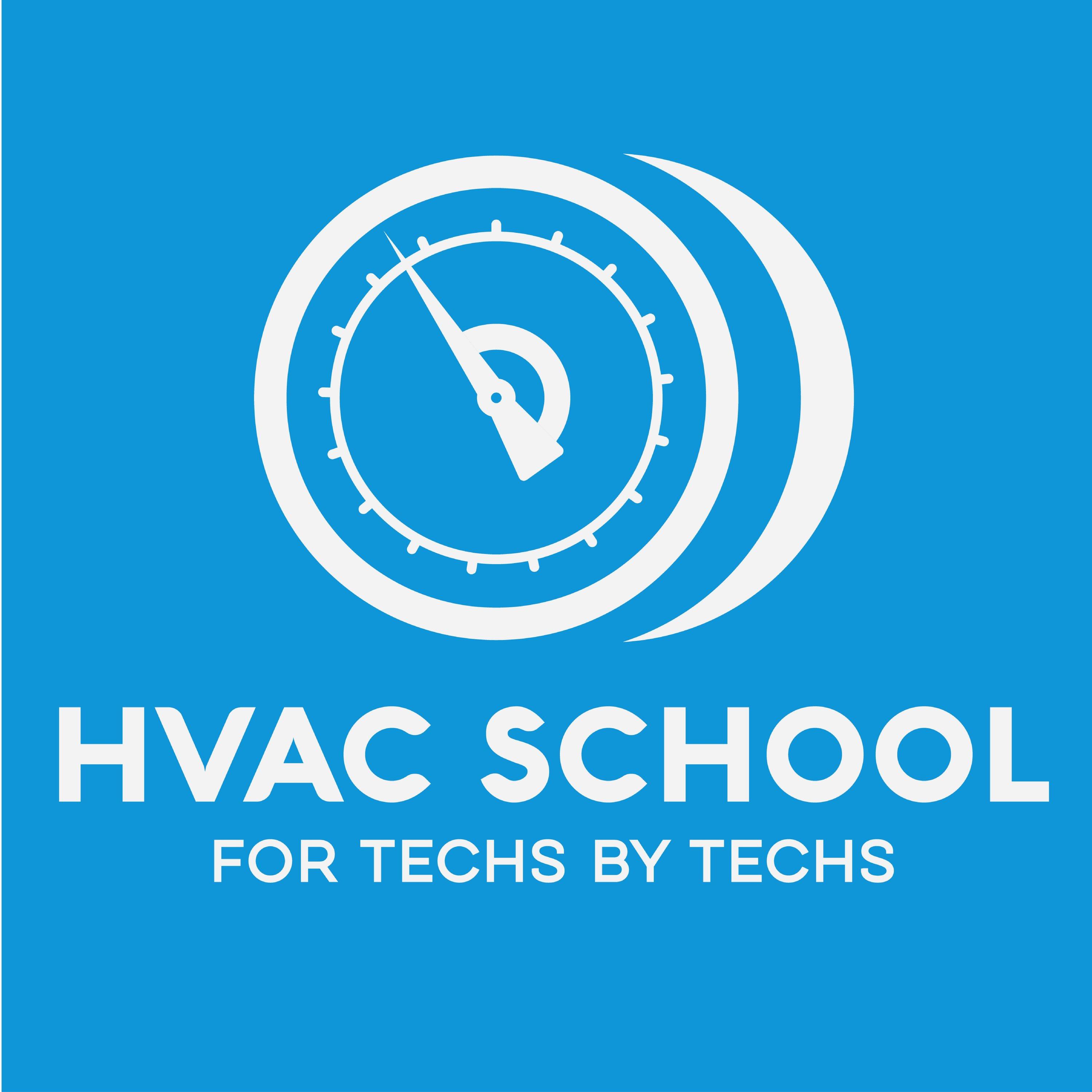
Margin, COGS, Markup & Profit Confusion - Short 123
In today’s short podcast, Bryan clears up the differences between markup and profit margins in HVAC businesses. The number one mistake that people make in business is confusing markup and gross margin. For example, you can double the price of a $50-part and sell it for $100. That would be a 100% markup. However, your gross margin is NOT 100%; your gross margin is only 50%; you only made a 50% profit on the total sale. In the same case you have above, you have a 50% cost of goods sold (COGS). COGS is the direct cost of the expenses you paid to sell your service or product. The opposite of COGS is overhead. Overhead includes anything that doesn’t directly bring money to your business (rent, utility bills, etc.). Let’s say that your overhead costs total $30. You only end up with $20 of net profit. Typically, 10-20% net profit is a good (if slightly idealistic) goal. Net profit can contribute to business growth if you put it into your business. For example, you can use that money for advertising, buying vans, and buying better tools. If you want to determine a 10-20% goal, DO NOT USE MARKUP. Instead, you need to divide by your COGS expenses. In the case of the $50-scenario, let’s say that our cost of goods sold is 60%, so that seems like a 40% markup. You would divide 50 by 0.6, and you would get $83.33. If you multiplied by markup (140% or 1.4), you would have gotten $70. You wouldn’t come close to your gross margin number using the markup method. Learn more about Refrigeration Technologies HERE. Check out NAVAC HERE. Check out SpeedClean HERE. If you have an iPhone, subscribe to the podcast HERE, and if you have an Android phone, subscribe HERE. Check out our handy calculators HERE.
11:4120/07/2021

Planning and Layout of HVAC Projects
In today’s podcast, Eric Mele and Bryan explain the planning, layout, and execution of HVAC projects. They mostly cover commercial ductwork but also touch on piping and some residential projects. Planning The first step is to review the construction plan WITH a site visit. It is best to see how a plan works within the space; plans may be feasible on paper but may not work out as planned in the actual space. During the site visit, you also want to establish solid communication with everyone else on the project. As such, it is best practice to have a coordination meeting with the general contractor and other trades (such as drywallers) to communicate potential areas of conflict. (When building ducts in commercial structures, you will want to watch out for conflicts with trusses, joists, fire sprinklers, and plumbing/drains. In residential structures, you will have to watch out for ventilation paths, such as dryer vents and kitchen exhaust vents.) Before deciding to alter the design, be sure to communicate any possible alterations to the GC and other trades. Layout If possible, the next step is to lay out your construction plans on the floor. Constantly referring back to paper or digital plans is not productive. You can usually chalk up or spray paint the concrete at a construction site to draw your layout and plan the construction accurately within the space. The floor is also likely to be your best reference. You can also use string to plot the locations where the hangers would go, especially if you have long runs of ductwork. Execution The first step of executing a project is preparing for hanging. When preparing for hanging, it is best to perform as much of the work on the floor as possible. The duct board can be stapled, taped, or masticed on the floor. Then, the hangers go up. If you have multiple people working on a project, one person can assemble the ducts on the floor and wait for the mastic to dry while another person puts up hangers. You can usually wrap the ducts on the floor, and it is usually easier to do so. However, it is best to check with your GC before you do it. You may need the ductwork to pass an inspection. When it comes to fasteners, you can use screws, flat strapping, or even aircraft cable. If using screws as fasteners, try to make sure that all of the screws have the same heads. Having to switch out drillbits for all the different screws is very inefficient. (As always, make sure your tools are easy to reach and in locations that won’t hurt your back. It is a good idea to have a toolbelt or workstation.) When working with flex duct, make the takeoffs as easy for yourself as possible. You can use mastic as a seal for the collar instead of tape, as it may be easier to seal. (Either way, watch out for leaks.) No matter what you do, make sure you’re taking care of your body, doing as much work on the floor as possible, and adhering to all applicable building codes. If you have an iPhone, subscribe to the podcast HERE, and if you have an Android phone, subscribe HERE.
48:5715/07/2021

Startup vs commissioning - Short 122
In today’s short podcast, Bryan explores the differences between startup and commissioning. Startups typically involve going in during the construction phase after the drywall has been sealed up. (Vents, ducts, and copper piping typically go in before the drywall.) A technician can then perform a startup. The startup includes testing the drain line, checking the charge, checking for leaks, and seeing if the equipment performs its most basic function. (Does the gas furnace make flame? Does the A/C unit blow cold air?) The startup’s goal is to get the equipment working. A startup does NOT focus on peak performance. A good startup will typically suffice for a cookie-cutter residential construction. Conversely, the goal of commissioning is to optimize the equipment and test the advanced functions. Combustion analysis, airflow tests, and dehumidification tests all fall under the “commissioning” umbrella. Commissioning is where we use Manual S and Manual J to see if the equipment is appropriate for the home. Data collection, especially on sensible and latent capacities, is the core element of commissioning. Commissioning also involves checking up on secondary functions, such as checking if heat strips activate during defrost. A custom construction plan will require commissioning to ensure that the equipment runs optimally in the uniquely designed space. So, in short, equipment startup is about making sure the equipment works as it should on a basic level. On the other hand, commissioning uses data and specific instrumentation to make sure the equipment is running to its design and full potential. Bryan also covers: Stages of residential construction Startup in new construction projects Capping and filling drains Who can perform a startup? (Junior techs, installers, senior techs, etc.) Instrumentation for commissioning If you have an iPhone, subscribe to the podcast HERE, and if you have an Android phone, subscribe HERE.
10:4713/07/2021
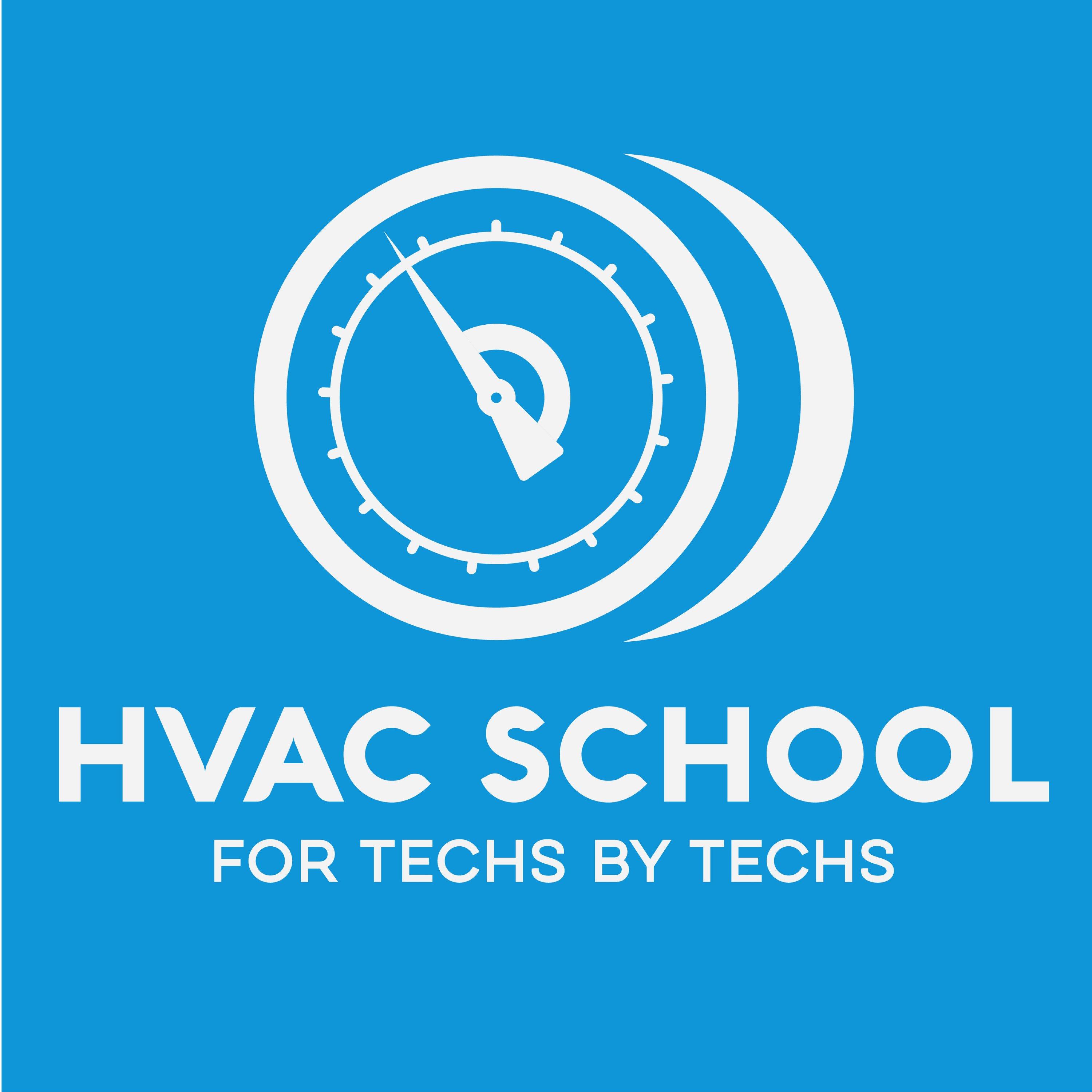
How to Make Mentorship Work w/ Eric Kaiser
In today’s podcast, Eric Kaiser and Bryan talk about mentorship in the HVAC industry. They discuss what it means to be a good mentor, how to find a good mentor, and what it means to be mentored. Mentorship is an organic process. Most mentees don’t go up to someone they respect and formally ask that person to be their mentor. Respect is the foundation of the mentor-mentee relationship; formal mentorship often resembles friendship in many ways. However, mentorship can take more forms than the traditional mentor-mentee relationship. In the digital age, podcasts and YouTube channels that readily share information about a skill are resources that can fulfill the same role as a traditional mentor. A good mentor has a willingness to explain the how and why behind a question or process; they don’t give simple answers. Good mentors must also be able to provide resources for their mentees; they know the limits of their knowledge and are willing to find those answers with their mentees. Often, the better mentors are humble and don’t flaunt their experience. Good mentors want to see their mentees do well and grow; they don’t want their mentees to follow and copy them. The support in the relationship goes both ways. The mentee must want to support their mentor, not compete with them. Mentees must be willing to start conversations and ask for clarification; an ineffective mentee waits for answers to be spoonfed to them. Good mentees are also willing to challenge their mentors at times [respectfully]; they don’t excessively flatter their mentors. Bryan and Eric also cover: Personal growth Online mentorship resources Cultish mentors Outgrowing and leaving mentors “Stealing” in mentor relationships Unproductive mentorship Honoring mentorship If you have an iPhone, subscribe to the podcast HERE, and if you have an Android phone, subscribe HERE.
52:1008/07/2021





